HALO Space unveils capsule design for stratospheric space 'glamping'
A Spanish balloon company plans to begin flying paying space tourists in 2026
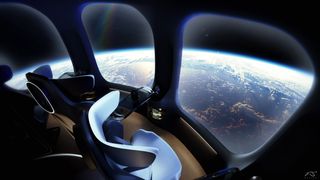
LONDON — Stratospheric balloon company HALO Space plans to offer aspiring space travelers the space tourism equivalent of glamping. Instead of tight space suits and stomach-churning G-forces typically attached to a rocket flight, the company's pressurized capsule, attached to a helium-filled balloon, will offer comfy swivel seats, giant windows and a selection of fine cuisine.
The Spanish-headquartered firm unveiled the design of the 3.9-ton (3.5 metric tonnes) Aurora capsule at an event in London on Wednesday, April 10, and said it hoped to begin commercial operations in 2026.
Unlike suborbital space tourism companies such as Virgin Galactic and Blue Origin , HALO Space won't be taking passengers high enough to experience weightlessness . The flight will be a rather leisurely affair lasting up to six hours, almost four of which will be spent hovering in the stratosphere some 22 miles (35 kilometers) above Earth's surface. There, high above the cloud tops, passengers will be able to admire the star-studded blackness of space above, as well as the curvature of the planet shrouded in the atmosphere beneath their feet.
Related: Space Perspective is nearly ready to fly tourists on luxury balloon rides near the edge of space (exclusive)
"When you talk to astronauts, they tell you that this experience of watching the planet from above is really something unique and extraordinary," HALO Space CEO Carlos Mira said in the press conference. "So far, only 650 humans have had the opportunity to experience this overview effect. But you don’t need to go all the way to space to have it. We hope to offer this experience to 1,000 people by 2030."
HALO Space is one of two companies currently readying its balloon technology to begin commercial operations in the next two years. The other is Florida-based Space Perspective, which revealed a completed test model of their Spaceship Neptune in February. HALO Space said they have conducted five test flights with a mockup and plan to take off for the first crewed test in 2025 before commencing flights with paying passengers a year later.

Both companies hope their propositions will attract a wider customer base than the jerky rocket rides of Blue Origin and Virgin Galactic, which propel daredevil clients on short joy rides to the edge of space and back. Reaching an altitude nearly three times higher than stratospheric balloons, Virgin Galactic and Blue Origin's spacecraft experience several-minute-long spells of microgravity before falling back to Earth .

Get the Space.com Newsletter
Breaking space news, the latest updates on rocket launches, skywatching events and more!
At $164,000 per seat, a trip with HALO Space will cost about a third of the price of a Virgin Galactic flight and won't require any advanced medical certifications.
"The take-off will be like being in an elevator," said Mira. "The ascent is soft and gentle, climbing at 12 miles per hour."
The 16-foot-wide (5 meters) and 11.5-foot-tall (3.5 m) capsule will be made of aluminum alloy and composite materials. With an internal space of 30.4 square feet (2.8 square meters), the spaceship could host eight paying passengers, plus a pilot. The internal atmosphere will be maintained by a life-support system similar to that of an aircraft. Yet despite this crammed interior and the extreme environment outside the capsule, passengers should still feel perfectly comfortable and able to relax.
"It's meant to be a sort of a glamping experience," Frank Stephenson, creative director and founder of Frank Stephenson Design who led the design work said at the conference. "It's a high-level experience for these people who are used to flying first class rather than economy."

Stephenson, who had previously worked for high-end car makers including BMW, Ferrari, Maserati and McLaren, said the biggest challenge was keeping the capsule light enough so that it can be safely lifted by the balloon while still making sure every aspect of the interior lives up to the expectations of passengers.
“It's very easy to add weight to things and make it super comfortable," Stephenson said. "It's more difficult to reduce weight, reduce material and still make it feel like a very unique experience."
When fully inflated, the stratospheric balloon will be 460 feet (140 meters) tall, towering over the gleaming space capsule. The balloon is designed to detach from the capsule during descent. The capsule will then be brought down to a landing under a steerable parachute. Mira said the balloon technology is inherently safer than rockets loaded with explosive fuels. It also produces no greenhouse gas emissions, making the experience 100 percent compliant with the most stringent environmental protection standards.
— Space Perspective wants to take tourists on balloon rides to the stratosphere
— Space Perspective partners with Exclusive Resorts for balloon rides to the stratosphere
— Space Perspective starts selling seats for balloon rides
"We are using mature technologies," said Mira. "Balloons in general have been around for more than 200 years. This type of balloon, stratospheric balloons, have been around for almost 100 years. The first human went to the stratosphere on a balloon in 1931."
HALO Space plans to fly from spaceports in the Mojave Desert in the U.S., Spain, Australia and Saudi Arabia. The company is currently working with the U.S. Federal Aviation Administration to receive a license before its first crewed flight next year.
Join our Space Forums to keep talking space on the latest missions, night sky and more! And if you have a news tip, correction or comment, let us know at: [email protected].
Tereza is a London-based science and technology journalist, aspiring fiction writer and amateur gymnast. Originally from Prague, the Czech Republic, she spent the first seven years of her career working as a reporter, script-writer and presenter for various TV programmes of the Czech Public Service Television. She later took a career break to pursue further education and added a Master's in Science from the International Space University, France, to her Bachelor's in Journalism and Master's in Cultural Anthropology from Prague's Charles University. She worked as a reporter at the Engineering and Technology magazine, freelanced for a range of publications including Live Science, Space.com, Professional Engineering, Via Satellite and Space News and served as a maternity cover science editor at the European Space Agency.
The sun might've just had a record-breaking number of visible sunspots
Intense solar storm opens '2-way highway' for charged particles, sparking rare auroras on the sun
HP Spectre x360 14 (2024) laptop review
Most Popular
- 2 James Webb Space Telescope adds to the confusing drama of Hubble tension
- 3 The sun might've just had a record-breaking number of visible sunspots
- 4 Intense solar storm opens '2-way highway' for charged particles, sparking rare auroras on the sun
- 5 The discovery of a new Earth-like planet could shed further light on what makes a planet habitable

- Suppliers Directory
- Starting a Business
- Planning Permission
- Businesses For Sale
- Annual Directory

HALO Space unveils stratospheric ‘glamping’
Halo space , a stratospheric balloon company, is revolutionizing space tourism with a luxurious twist akin to glamping..
Instead of the typical space journey’s tight suits and stomach-churning G-forces, HALO’s pressurised capsule, tethered to a helium-filled balloon, boasts plush swivel seats, expansive windows, and gourmet dining.
Unveiled in London, the 3.9-ton Aurora capsule aims for commercial operation by 2026. Unlike competitors like Virgin Galactic and Blue Origin, HALO won’t offer weightlessness. Its leisurely six-hour flights, with nearly four hours spent 22 miles above Earth, promise breathtaking views of space and Earth’s curvature.

CEO Carlos Mira aims to provide the rare “overview effect” to 1,000 by 2030, rivaling only 650 astronauts. HALO Space, alongside Florida’s Space Perspective, prepares for commercial launches. Five test flights precede HALO’s crewed 2025 debut, offering a smooth ascent unlike jerky rocket rides.
At $164,000 per seat, HALO’s experience is a fraction of competitors’ costs and requires no medical certifications. With a spacious, aluminum-alloy capsule hosting eight passengers and a pilot, HALO ensures comfort akin to first-class travel.

Creative director Frank Stephenson, renowned for luxury car designs, previously working with BMW, Ferrari, Maserati and McLaren, crafts a glamping experience balancing comfort and weight. The 460-foot stratospheric balloon, detachable during descent, prioritizes safety and environmental compliance, free from greenhouse gas emissions.
Stephenson said, “It’s meant to be a sort of a glamping experience. It’s a high-level experience for these people who are used to flying first class rather than economy.”
HALO Space plans launches from global spaceports, awaiting FAA approval for its inaugural crewed flight next year.
Post Navigation
Previous Post Previous Hypedome elevates glamping to new dimensions this spring

Next Post Next Newbook acquired by self-storage tech company Storable

We use cookies to enable the normal operation of our website as well as to monitor website traffic. By continuing to browse our website, you consent to the cookies set in your preferences. Manage your preferences.
- Core Cookies These cookies are required for the website to function. No personal identifiable information is used or stored in these cookies.
Save Preferences View Cookie Policy
- The Glamping Show
Get the latest industry news straight to your inbox.
We send out a newsletter once a week highlighting recent articles, new products, upcoming events, and more for the glamping industry..
Balloon-powered 'space glamping' for only US$164,000 could start by 2026
Stratospheric balloon-powered flights will be longer, gentler, quieter, cheaper (and lower) than the likes of Blue Origin and Virgin Galactic
You can save this article by registering for free here . Or sign-in if you have an account.
Article content
A Spanish company that aims to take tourists to the edge of space compares its balloon-powered trips to the stratosphere as leisurely “glamping,” as distinct from the more brief, intense and rugged space tourism being offered by the likes of Virgin Galactic and Blue Origin.
HALO Space hopes to have its first commercial flight in 2026, and this month unveiled its pressurized capsule, called Aurora, at a press conference in London, England.
Enjoy the latest local, national and international news.
- Exclusive articles by Conrad Black, Barbara Kay and others. Plus, special edition NP Platformed and First Reading newsletters and virtual events.
- Unlimited online access to National Post and 15 news sites with one account.
- National Post ePaper, an electronic replica of the print edition to view on any device, share and comment on.
- Daily puzzles including the New York Times Crossword.
- Support local journalism.
Create an account or sign in to continue with your reading experience.
- Access articles from across Canada with one account.
- Share your thoughts and join the conversation in the comments.
- Enjoy additional articles per month.
- Get email updates from your favourite authors.
Don't have an account? Create Account
The capsule — HALO sometimes refers to it as a “spaceship,” though it won’t fly high enough to reach what is generally considered outer space — stands about 3.5 metres tall and five metres wide, with an internal space of about 30 square feet, or 2.8 square metres. Cubic space isn’t measured because — again, unlike rocket-powered space tourism ventures — passengers will not achieve weightlessness during the trip.
Instead, up to eight passengers plus a pilot will embark on a six-hour journey, four of which will be spent in the stratosphere, 35 kilometres above the Earth. That’s high enough to see the blackness of space above, and the distinct curvature of the Earth below.
“It’s meant to be a sort of a glamping experience,” Frank Stephenson, who led the design work for the capsule, said at the press conference. “It’s a high-level experience for these people who are used to flying first class rather than economy.”
Rather than ascend by rocket power, the HALO capsule will be carried under a massive balloon some 140 metres tall. During descent, the balloon will detach from the capsule, which will then be brought down to the ground by a steerable parachute. The paraglider-type parachute was tested last year in a dry lakebed in California.
Balloon power also means the ascent will be at a leisurely 20 km/h. “The take-off will be like being in an elevator,” HALO CEO Carlos Mira said at the press conference.
If the G-forces aren’t as steep, neither are the prices. Blue Origin is notoriously tight-lipped about the costs of its suborbital space flights — William Shatner flew for free — but Virgin Galactic charges US$450,000 for a flight. HALO is a relative bargain at US$164,000 per ticket, though again, one-third the price gets you about one-third the distance above the Earth — 35 kilometres versus the 100 or so reached by the rocket rides.
HALO also isn’t the only company looking to cash in on the high-altitude balloon market. Florida-based Space Perspective recently unveiled its own “spaceship” (lofted by what it call a “SpaceBalloon”), which it plans to test-fly this year with the ambitious aim of welcoming paying passengers before the end of 2024. It’s advertising a price of US$125,000 per seat.
HALO, meanwhile, lofted a full-sized prototype capsule in late 2022, and expects to complete its first crewed test flight sometime next year.
“When you talk to astronauts, they tell you that this experience of watching the planet from above is really something unique and extraordinary,” Mira said. “So far, only 650 humans have had the opportunity to experience this overview effect. But you don’t need to go all the way to space to have it. We hope to offer this experience to 1,000 people by 2030.”
HALO says it will launch from locations in the Mojave Desert in the U.S., as well as Spain, Australia and Saudi Arabia.
Postmedia is committed to maintaining a lively but civil forum for discussion. Please keep comments relevant and respectful. Comments may take up to an hour to appear on the site. You will receive an email if there is a reply to your comment, an update to a thread you follow or if a user you follow comments. Visit our Community Guidelines for more information.
Alberta moving ahead with new female sports rules after Olympic controversies
Vancouver pro-palestinian leader praises 'heroic' october 7 massacre on iranian tv, joel kotkin: boomers have left the economy in tatters, driving youth to the right.

More than 40,000 people sign petition claiming breaker Raygun 'manipulated' Olympic process
No decision made on bonus for cbc president catherine tait for past two years, says federal government, top portable air conditioners are on sale now.
Compact, energy-efficient units with high cooling capacity
Get lifetime access to Microsoft Office 2021 on sale
Don't miss this deal on Microsoft Office's full suite of applications and tools
Advertisement 2 Story continues below This advertisement has not loaded yet, but your article continues below.
The best backpacks for every Canadian
Top backpacks for school, work and more
Emily in Paris stars Lily Collins and Ashley Park talk Season 4, friendship and fashion
Reviews and recommendations are unbiased and products are independently selected. Postmedia may earn an affiliate commission from purchases made through links on this page.
The best water flossers with the Canadian Dental Association seal of approval
Gently remove plaque and maintain gum health
This website uses cookies to personalize your content (including ads), and allows us to analyze our traffic. Read more about cookies here . By continuing to use our site, you agree to our Terms of Service and Privacy Policy .
You've reached the 20 article limit.
You can manage saved articles in your account.
and save up to 100 articles!
Looks like you've reached your saved article limit!
You can manage your saved articles in your account and clicking the X located at the bottom right of the article.
- Share full article

Glamping With the Stars
Would cloudy weather ruin a visit to the first-ever resort to receive certification from DarkSky International? A stargazer in Utah holds on to her optimism.
Under Canvas Lake Powell-Grand Staircase, a glamping resort in Utah, is the first resort to be certified by the nonprofit authority on light pollution, DarkSky International. Credit... John Burcham for The New York Times
Supported by
By Colleen Creamer
- Published May 1, 2024 Updated May 2, 2024
As I exited Harry Reid International Airport on a bright March afternoon, my hand flew up to protect my eyes, which had grown accustomed to the dull light of a long, gray Tennessee winter. I’d headed west for the sun, but even more so for the night sky, so I was hoping for clear weather ahead. I climbed aboard a shuttle bus that would take me two hours east to Utah, where I planned to spend a starry night at Under Canvas Lake Powell-Grand Staircase .
The glamping resort, one of 12 Under Canvas sites, is anchored on a canyon rim plateau in southern Utah and is the first resort in the world to be certified by the nonprofit authority on light pollution, DarkSky International . My aim was to beat the heat and the crowds — but what I really wanted was to be an early adopter of certified starry resorts.
The DarkSky Approved Lodging program is another step forward in the nonprofit’s history of advocacy for the reduction of light pollution. Broadly, the requirements for certification include being situated in an “exceptionally” dark location; having approved means of reducing the impact of light at night; and providing educational materials about night sky conservation to guests.
Under Canvas, said James Brigagliano, the program’s manager for DarkSky, was a good fit for the project because the company’s sites are in dark locations, and they already follow eco-friendly practices. Since the Lake Powell site was certified in August, other Under Canvas locations in the National Park Service’s Grand Circle Western parks area have also been approved.

Hoping for good weather
In St. George, Utah, I rented a car and headed southeast, the Pine Valley Mountains hovering to the north. The second half of the two-hour drive was on Route 89, which runs from Mexico to Canada. My roughly 60-mile section was marked by sienna-hued mesas and buttes, and cornflower-blue skies.
By 3:30 p.m., I was bouncing along a red dirt road until Under Canvas’s cream-colored tents came into view. There are 50 in all, scattered across 220 acres, all of them with views of Grand Staircase-Escalante National Monument , a massive geological formation that occupies about 1.87 million acres of public lands, from desert to coniferous forest.
As I got out of my car, I looked up at the sky warily. Clouds were gathering.
In the dirt lot, there were vehicles from Western states and a few from the Northeast. Like me, these travelers had come early — one day after the resort opened for the season — to take advantage of the cool weather and outdoor activities like horseback riding, hiking, rappelling in nearby Elephant Canyon and private tours of the Grand Staircase. There is also boating and fishing on Lake Powell, though the water level there has been much impacted by drought .
Many, like myself, came mainly for the night sky in Utah, which has large swaths of land with minimal artificial light and a dry climate that translates into less water vapor, which can blur the stars.
But would the weather cooperate?
Reaching for the stars
Under Canvas is certainly not the first hospitality company to tout its access to the night sky. Over the last 20 years or so, hotels in bucolic settings, along with permanent glamping sites, have been working stargazing into their guest offerings. There’s the observatory at Primland Resort in Virginia’s Blue Ridge Mountains, and the astronomy dinner at Soneva Jani in the Maldives. Elqui Domos in northern Chile has geodesic domes and cabins that open to the sky.
With stargazing in mind, Under Canvas began working with DarkSky in 2021 to arrive at a lighting design plan.
“Getting the certification from DarkSky was altruistic in terms of intention,” said May Lilley, the chief marketing officer at Under Canvas. “It’s a part of our mission to make sure our guests leave with a little bit of a different philosophy, whether that means they just turn the lights off when they leave a room.”
DarkSky’s hope, said Mr. Brigagliano, is that the new certification program will become the de facto standard for all lodging in locations dark enough to pass the organization’s protocol.
Attention to the night sky could not happen sooner. A study published in Science magazine in 2023 revealed that the sky glow from cities and towns increased 10 percent each year from 2011 to 2022, underscoring the startling results from a 2016 study that showed that 99 percent of those living in highly populated areas around the world can no longer see most stars, if any.
The category for lodging complements DarkSky’s existing certification program for International Dark Sky Places , of which there are more than 200, including Zion and Yellowstone national parks; the Arkaroola Wilderness Sanctuary in Australia ; the Namibrand Nature Reserve in southern Namibia; and even urban places, like Parc du Mont-Bellevue in the city of Sherbrooke, Quebec.
Response to news of the program was fairly immediate, said Mr. Brigagliano. “So far, nearly 100 resorts, retreat centers, ranches and other lodging properties from the United States, Canada, Britain, Thailand, Australia, India, Germany, Saudi Arabia and the Cook Islands have contacted us regarding the program. We are getting interest from a variety of businesses, from nonprofits to luxury, high-end properties.”
Where are the stars?
Inside the common area — a large tent that acts as a front desk, restaurant, snack bar and hang out — a couple from San Francisco with a dachshund had just finished registering. The woman who registered me took me by A.T.V. to my safari-style tent.
All the tents are within a soft yell of each other and all have decks, en-suite bathrooms with showers, and four vertical walls that provide more room than traditional pyramid-shaped tents. Inside mine was a king-size bed, two leather chairs and a wood-burning stove. My choice, the Stargazer (I paid $432, including taxes and fees), also has a sky-viewing window that arcs above the bed.
I stepped out on the deck. The valley was dark below dense clouds. Back inside, I could hear the patter of rain on canvas. I ditched my plan to walk to the on-site slot canyon — slot canyons can flood — and slid under the viewing window, which was dotted with raindrops. The prospects of a starry night seemed remote.
I zipped up my parka, wishing I had brought better shoes for hiking in the rain, and walked down to the main common area. The roasted trout ($25) looked tempting, but the cafeteria was uncomfortably cold. I pulled out a protein bar from my backpack and took a seat under one of the sheltered gathering areas, noticing how the rain transforms Utah’s striated Navajo sandstone into deeper hues of coral and ecru. The wide valley between myself and Grand Staircase might have been two miles or 20, the scale was so unfathomable. A couple from Idaho in oilskin jackets and hiking boots, who looked as though they could ice-pick up Mount Everest, joined me. Unlike me, they were better prepared for inclement weather, which hadn’t stopped them from hiking nearby canyons.
By 8 p.m. the rain had become a misty drizzle. Hoping for the best, I set my alarm for 3:30 a.m., around the time the outer regions of the Milky Way appear in the Northern Hemisphere (given the right conditions).
When the alarm went off, I opened my eyes to stars shining through the still-damp window. I got dressed, grabbed a battery-powered lantern and stepped out into the night. Above me, in all directions, the sky was at last unblocked; I could not have been more surprised.
I made my way down the dirt path, which was lit by small solar ground lights, to get closer to the canyon rim. Smoke from the stoves in several tents drifted up and disappeared. A jack rabbit crossed my path. I sat down on a patch of dry scrub. This was the Colorado Plateau, one of the darkest sections of the United States, and even with a remaining cloud or two, thousands of stars shone through the darkness. Was that the veil of an aloof Milky Way above me? With a clear view to the west, I was almost certain I could see Venus. Using my stargazer app, SkyView, I managed to find the constellations Orion and Leo.
I lay back and stayed there until the stars faded in the predawn sky and the morning light began its spectacular migration across the wide valley.
Follow New York Times Travel on Instagram and sign up for our weekly Travel Dispatch newsletter to get expert tips on traveling smarter and inspiration for your next vacation. Dreaming up a future getaway or just armchair traveling? Check out our 52 Places to Go in 2024 .
Open Up Your World
Considering a trip, or just some armchair traveling here are some ideas..
52 Places: Why do we travel? For food, culture, adventure, natural beauty? Our 2024 list has all those elements, and more .
Lake Como, Italy: Stars like George Clooney frequent this scenic corner of northern Italy, but you might be surprised by how affordable it can be. Here’s an insider’s guide .
South of France: Horses, bulls and birds of all types live among the pink marshes of the Camargue, a rugged landscape shaped by the relentless push and pull of sea and river.
Disney Theme Parks: As Disney has raised the cost of tickets and hotel rooms at its theme parks, and added pricey, difficult-to-navigate tools, even its most loyal fans are asking themselves if they should rethink their vacations.
Helsinki, Finland: Explore the stunning architecture of the new central library, browse treasure-filled shops in the Design District, sweat in a wood-burning sauna, sip cocktails on a schooner and trek across islands in the surrounding archipelago.
Salzburg, Austria: The compact Austrian city of medieval alleys, majestic Alpine views and just 150,000 residents bursts to life in the summer .
Advertisement

- Health and Fitness
- Holidays and Travel
- Nature and Wildlife
- Pets and Animals
- Photography
- Babies and Kids
- Comedy and Humor
- Strange and Bizarre
- Submit News
- Customize Interests
- Write For Us
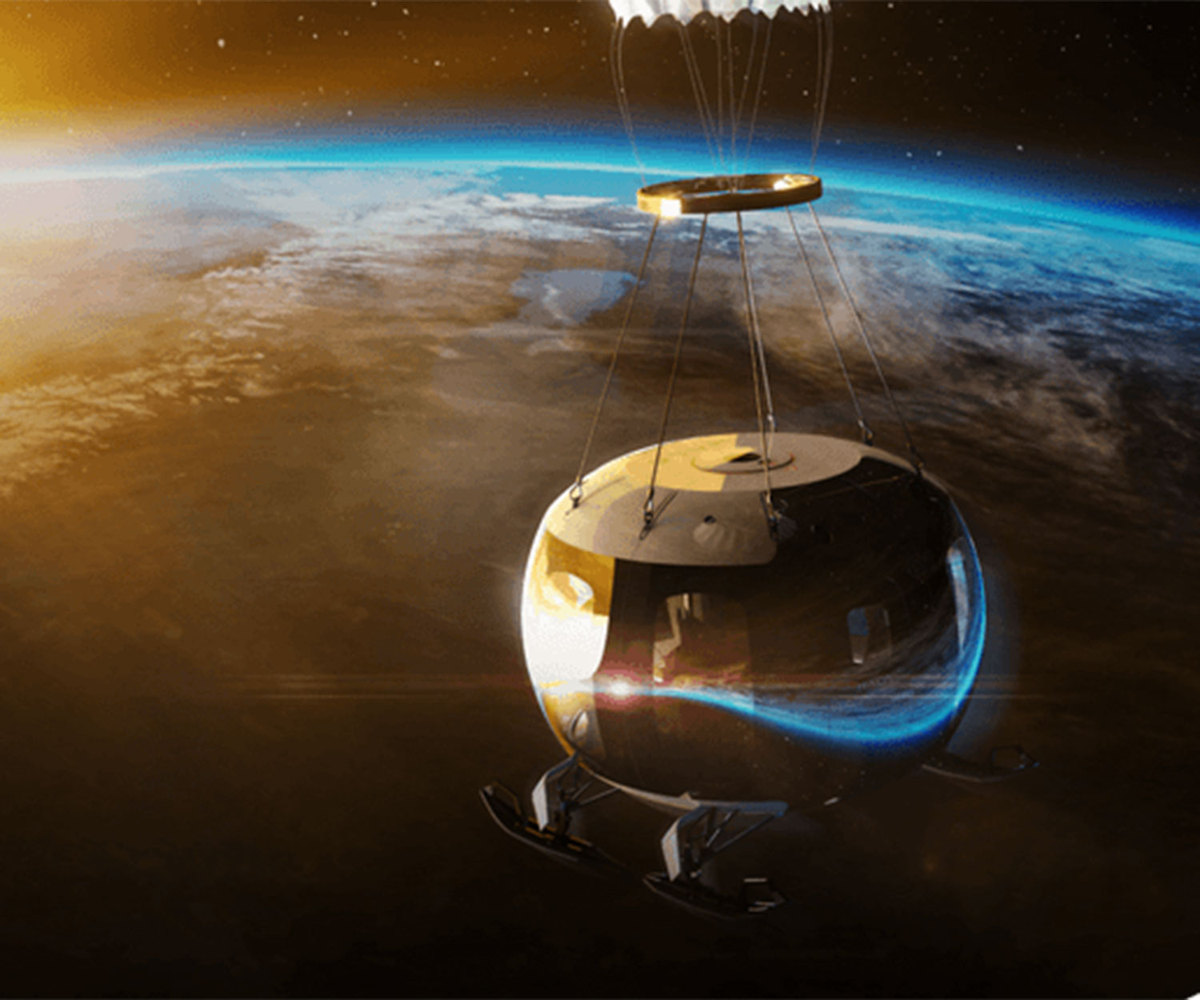
SPACE ‘glamping’ expeditions promise ‘maximum comfort’ with ‘gourmet cuisine’ – at £106,000
A space company has launched its new expeditions that will whisk you away in a balloon for the ultimate ‘glamping’ experience.
HALO Space is set to whisk tourists over 18 miles into the stratosphere with the first journey planned for 2026.
The five-hour excursion has been described as the space tourism equivalent of “glamping” – complete with “gourmet cuisine ” before take-off and “maximum comfort every step of the day”.
READ MORE: Spiralling costs, no showers and anxiety about break-ins – these are the harsh realities of van life
- Advertisement -
The design was led by Ferrari FXX designer Frank Stephenson and offers 360 views of constellations and planets.
There are two current HALO bases – one in Spain and the other in Saudi Arabia – with two more in the works.
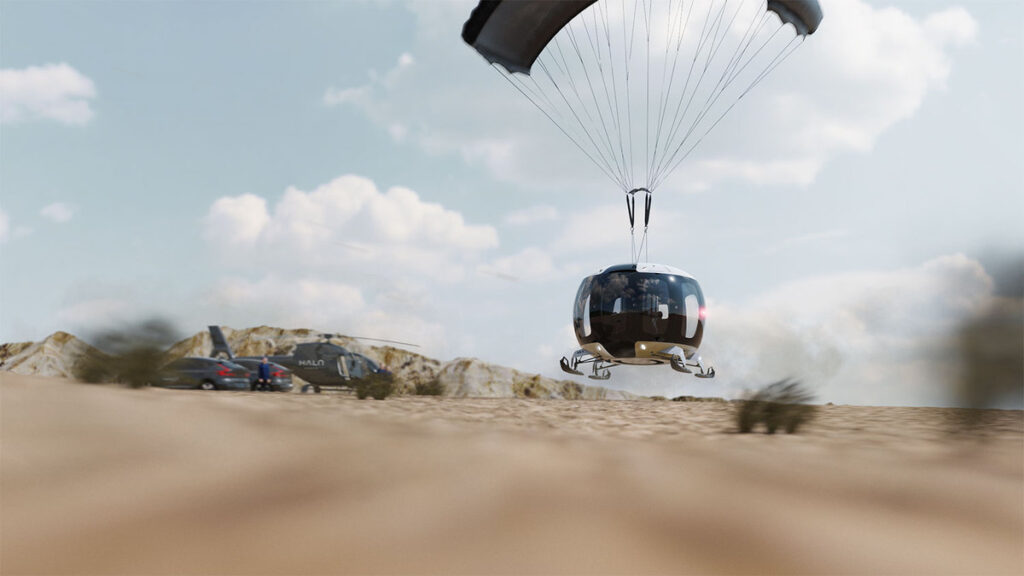
The flights from Spain will give tourists an incredible view of the Gibraltar Strait and Africa, while the Saudi Arabia trip will offer once-in-a-lifetime views of the Persian Gulf and the Red Sea.
The journey to the space location and back takes about five hours – less time than it takes to travel from New York to London.
On the day of departure, guests will get to enjoy sunrise in the stratosphere .
After lift-off, they will be able to move around the cabin and enjoy the views.
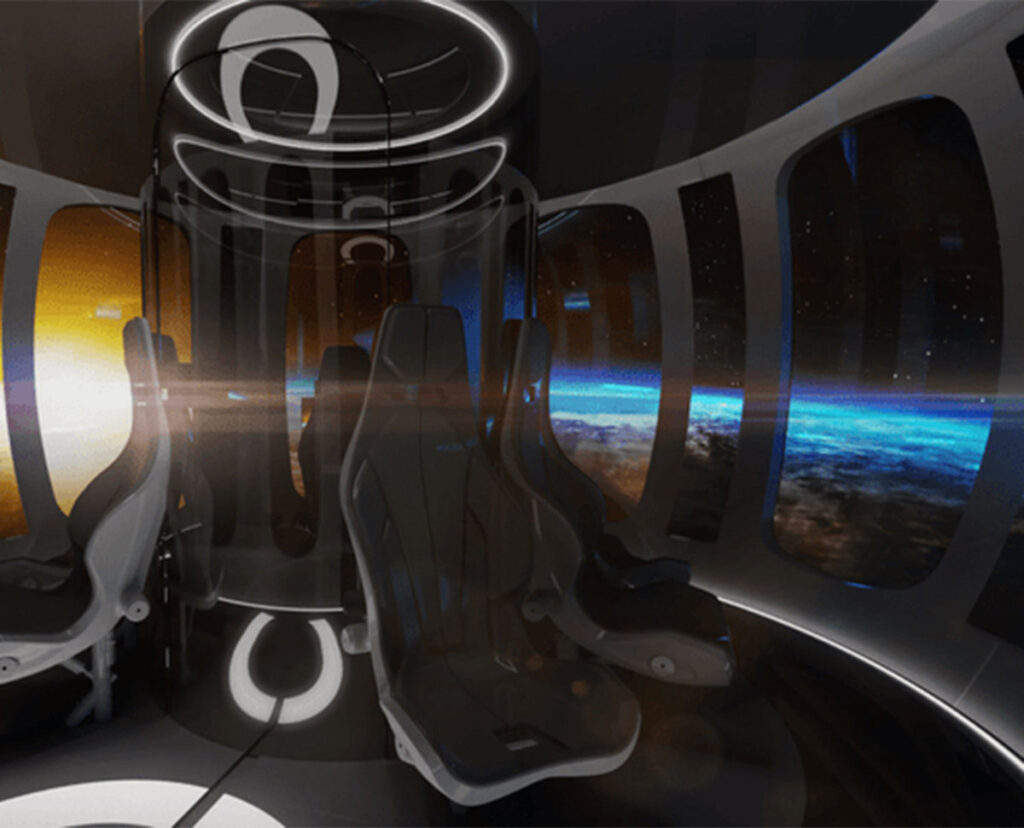
Tickets are believed to start around £106,000 (EUR 155,000) – much of which includes pre- and post-flight activities.
The company says it will offer “a curated selection of unique and enlightening experiences in science and culture” for customers to choose from.
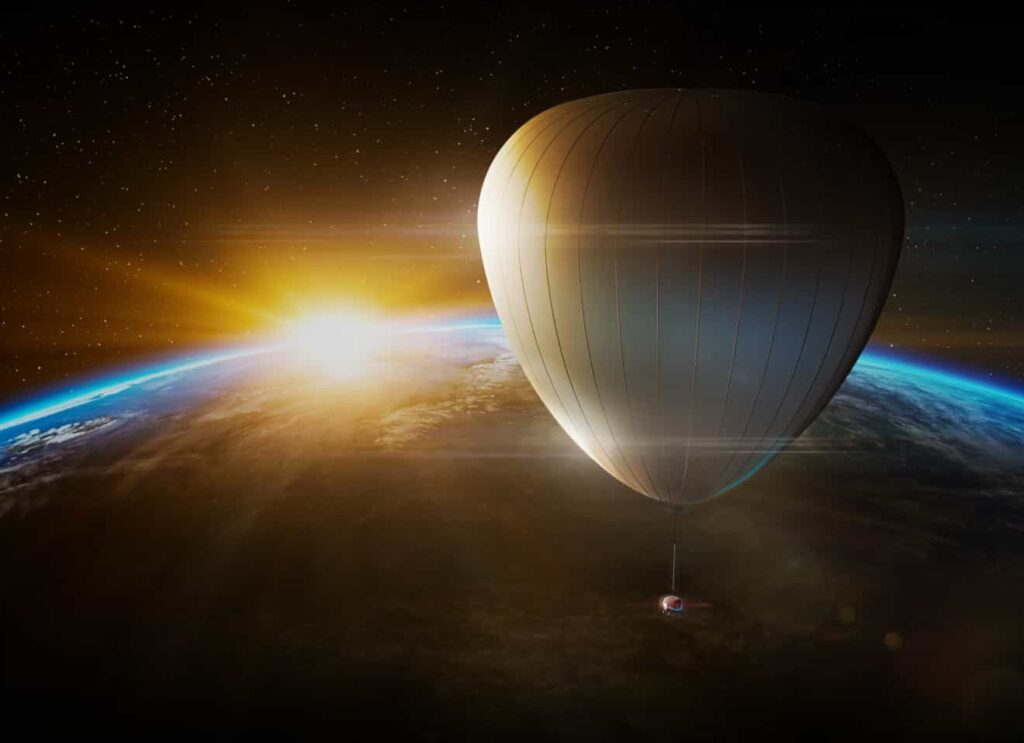
According to HALO, once above 30km altitude, the curvature of the Earth with its blue halo will be visible, with the sight known as the ‘overview effect’.
Hopeful passengers can book a seat a year ahead of the planned launches in 2026.
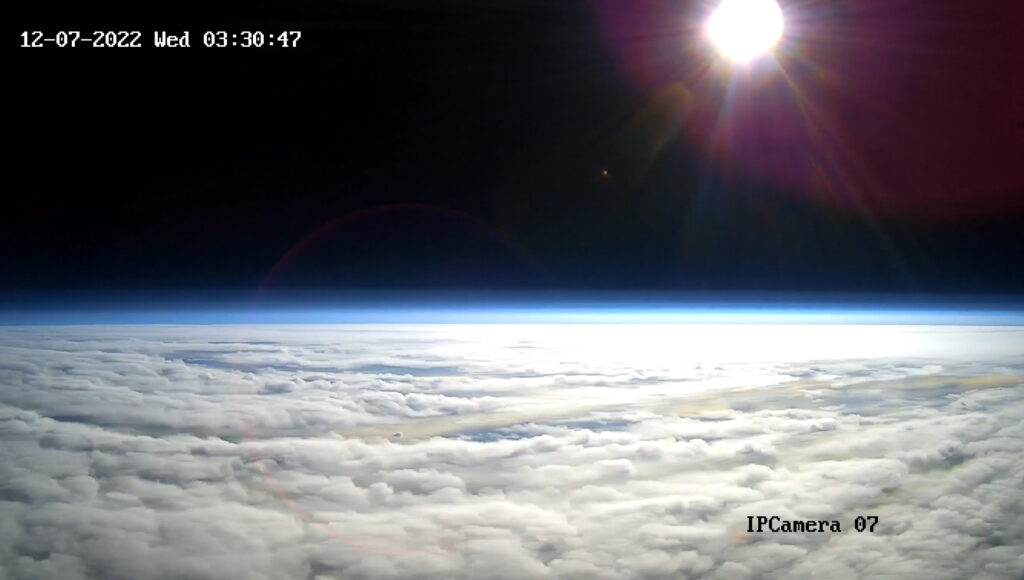
The Spanish company hopes that once fully functional, they will carry 3,000 passengers on 400 trips every year, with their commercial flights being ‘zero emission.’
It promises “an experience that takes you to the stratosphere and beyond” – saying exploring beyond Earth “is not just for astronauts”.
READ MORE: VIDEO: Couple suffer ‘traumatising’ £2,500 cruise experience to celebrate wedding anniversary
Share this:
Sign up for daily newsletter, be keep up get the latest breaking news delivered straight to your inbox..

Leave a Reply Cancel reply
Your email address will not be published. Required fields are marked *
Save my name, email, and website in this browser for the next time I comment.
Stay Connected
Latest news.

Farmer converts Royal Navy helicopter into unique holiday stay on ex-RAF base

Plus-size traveler claps back at trolls claiming she should pay for two seats

Savvy bride ‘felt like a princess’ at £3,000 budget wedding

Celeb astrologer who predicted Molly Mae and Tommy Fury split reveals ‘who will move on first’

Sign in to your account
Username or Email Address
Remember Me
The Camper’s Guide to Dark Sky Camping and Astrotourism
- Apr 13, 2023

Have you ever found yourself looking skyward on a cloudless night while camping, appreciating how many stars you’re able to see when you’re so far from the city? If you love spending time in the outdoors, chances are you’ve noticed that the night sky is more intense when you’re away from home. Maybe this simple moment of observation caused you to think about planning a trip solely devoted to sleeping beneath the cosmos or sparked your interest in outer space. What you might not know is that there is a whole world dedicated to the appreciation and preservation of our night sky and dark sky camping is one of the best ways to participate in it!
Whether you’re planning to sleep beneath an indigo quilt of constellations in the Outer Banks or hoping to catch a glimpse of the Aurora Borealis in Wrangell-St. Elias National Park, we’ve got you covered. Here is your ultimate guide to dark skies and astrotourism camping!
What Is Astrotourism?

What exactly is astrotourism? Astrotourism is defined by Utah University , in the densest area of dark sky places in the U.S., as being “nature-based tourism specifically concerned with the viewing of celestial objects, space, and the physical universe.” Essentially, astrotourism is a trip that is centered on viewing the night sky, preferably in an environment with clear, unbridled conditions and what better place to do just that than a designated Dark Sky Park?
Astrotourism is unique and exciting because it often takes intrepid adventurers to remote locations they may not have otherwise sought out. Since the dawn of time, humans have been fascinated with the stars, planets, and the stunning Milky Way, using it to navigate and to predict celestial events. With the turn of the century and industrialization, many lost their connection to dark skies and forgot about their effervescent beauty. Today, there has been a renaissance in the appreciation of dark skies through astrotourism as now more than ever, travelers are looking for ways to see our universe with the naked eye.
Where Can I Camp for Celestial Events?

If you’re looking to camp for celestial events, begin your search by looking for Dark Sky Parks or Communities near you by searching through the International Dark-Sky Associations list of designated Dark Sky Places . Maybe you want to stay close to home or are hoping to go further afield? This list is the perfect place to find inspiration to visit a destination you’ve always wanted to see, like a national park, which often have unprecedented views of the night sky, or to discover somewhere nearby that you hadn’t expected.
Whether you’re more interested in glamping or love roughing it, there are options for all who seek dark skies. For those truly ethereal views, you may want to consider tent camping or even a backpacking trip as you’re almost guaranteed to have incredible visibility, weather permitting. Camping at an RV park might mean you’ll need to walk or drive a ways away for the best conditions but chances are you’ll still be shocked at how well you’re able to see the night sky, even only a few steps away from camp!

Where Can I Camp for the 2024 Total Solar Eclipse?

On April 8, 2024, a vast majority of the United States will experience a partial solar eclipse, while select states will experience a true total solar eclipse. This event is already being referred to as the biggest travel day in U.S. history with thousands expected to travel to the path of totality. Campspot created a page that rounds up campgrounds within the path of totality to help campers experience this once-in-a-lifetime natural phenomenon in nature. Explore the eclipse path campgrounds and book a trip before spots run out!
What Should I Bring With Me?

From amateur telescopes to telephoto lenses, stargazing can be as simple as stepping outside your tent after dark. Here are a few things to bring along if you’re going on a camping trip dedicated to the cosmos!
Warm Clothes
You’ll be surprised how cold it can get in the middle of the night, when most of us are asleep! Bring along warm layers and gloves to keep warm while heading out to try and catch a glimpse at shooting stars.
Photography Equipment
Whether you plan to capture the night sky with your iPhone or are a savvy astrophotographer, bring along gear that will help you document the moment.
A telescope might seem like an advanced piece of equipment but they’re much easier to come by than you might think. Bring one along and witness celestial objects you’ve never seen before.
Flashlights or Headlamps
You’ll need to bring flashlights, a headlamp, or some form of light to guide your way. You’re in a Dark Sky Park after all! Many headlamps have a red light feature which is great for uninterrupted constellation views.
Bringing along a special drink for your dark sky camping trip will not only keep you warm but will make your efforts feel well rewarded.
Removable Rain Fly Tent
Fall asleep stargazing!
Unfortunately, being out after dark means you’ll play host to our bloodthirsty friends, the mosquitoes. Come prepared with bug spray to keep the biters at bay.
What Are Some Upcoming Celestial Events That Would Be Cool For Dark Sky Camping?

Mark your calendars for these upcoming celestial events that will ensure a dark sky camping trip that’s a once-in-a-lifetime experience. These celestial events are a great excuse to grab your gear and head into the wilderness!
Eta Aquarids Meteor Shower: Peak is on May 6th, 2023
The Eta Aquarids Meteor Shower can produce almost 60 meteors an hour and is an annual meteor shower that typically takes place from April 15th to May 27th. If you’re familiar with Halley’s Comet, the Eta Aquarids are dust grains that come from the comet’s entrance into the inner solar system. Pre-dawn is the best time to view this meteor shower.
Perseid Meteor Shower: Peak is on August 13th, 2023
The Perseid Meteor Shower is another annual meteor event that is in early to mid-August. It’s estimated that there are usually up to 60 meteors in an hour during its peak.
Blue Supermoon: August 31st, 2023
On August 31st, 2023 two moon phenomenons will converge to produce a blue supermoon. A supermoon occurs when the moon is a bit closer than normal to the earth due to its orbit. Despite its name, a blue moon does not actually appear to be blue and is simply the fourth moon in a season.
Annular Solar Eclipse: October 14th, 2023
An annular solar eclipse is an astronomical event that occurs when the moon, at its furthest in orbit from the earth, passes between the earth and sun. Because the moon is further away, a full eclipse isn’t possible. This cosmic phenomenon looks like the moon has a halo, as such, it’s sometimes referred to as the “ring of fire” eclipse.
Geminids Meteor Shower: Peak is on December 14th, 2023
The Geminids meteor shower is one of the best meteor showers visible in the United States with up to 120 meteors in an hour! This is a great year to view the Geminids as their peak aligns with a new moon, meaning light pollution will be at an all time low. The Geminids are also in the off season for many Dark Sky Parks and visibility should be at an all time high with clear air.
What Are Dark Skies?

Dark skies are defined by Utah University as being “places where the darkness of the night sky is relatively free of interference from artificial light.” While dark skies are becoming more and more scarce, the United States is a great destination for seeking out designated Dark Sky Places and learning more about what it takes to become a certified Dark Sky Place. The International Dark-Sky Associations rigorous certification process shows that dark skies can be rare and difficult to find. A dark sky is one that is almost completely free of light pollution and a place where you can see the night sky in the traditional sense, a smog-less field of constellations! America’s natural wilderness is fantastic for discovering our deep and spiritual connection to the night.
Why Are Dark Skies Important?
Dark Skies are becoming increasingly rare as civilization encroaches ever more into isolated natural areas. Light pollution, while it might seem harmless, affects the natural circadian rhythm of not only plants and wild animals, but humans as well. Light also contributes to our carbon footprint. The U.S. alone contributes over 15 million tons of CO2 every year, just for outdoor lighting alone. Until very recently in human history, virtually everyone in America could look up and see millions of stars, including the Milky Way! According to a study completed in 2016 by National Geographic , less than 1% of the country can see our galaxy today, making it more important than ever to take protecting our dark skies seriously through limiting light pollution. Our night sky was once a map and resource that we used for thousands of years until the advent of electricity. Dark skies are important for us to connect with and cherish as a resource that we continue to look to for guidance.
How Can I Go Dark Sky Camping?

The best place to start if you’re looking to camp in an area with dark skies is to look for places where the air will be clear from both pollution and weather related variables and a place that is far from major cities as light smog can be seen from as far as 200 miles away. Summer heat can also obscure the dark skies making winter or shoulder months ideal and a sustainable option as these areas often see less crowds.
While a quick look at a light pollution map will reveal that most of the best places to see dark skies are in the west, there are many places east of the Mississippi that are worth seeking out for celestial wonders! One of the best resources for dark sky parks is the official International Dark-Sky Association’s website which lists each and every designated park, community, sanctuary, reserve, and even urban night sky places!
Some of the best campgrounds on Campspot to reserve for a stargazing adventure are the Dark Sky RV Campground in Utah; the state with the most dark-sky parks in the county, Jerniman’s Campground along the Outer Banks remote Ocracoke Island, or Trinity View Resort near Idaho’s Sawtooth Mountains. These are just a few of the hundreds of campgrounds that are near or within a dark-sky designated area!

Dark Sky RV Campground
Dark Sky RV sits on 40 acres of untouched sagebrush. Their 18 full service sites and 10 Camp Luxury sites for vans have unobstructed views of the Red Cliffs, Vermillion Cliffs, and the Kaibab Plateau as well as the most beautiful sunrises, sunsets and a sky full of stars that’s hard to believe. Relax and enjoy their luxurious amenities, including private bath suites, outdoor showers, open terrac
- Internet Access
- General Store
- Special Events
How To Stargaze, Sustainably
Because many Dark Sky Parks are located in remote and rural communities and national parks, astrotourism has caused a boom these areas may not have otherwise seen. This is beneficial for local economies but can be harmful to their natural surroundings if we don’t do our part to keep them clean and stargaze in an eco-friendly manner. A few tips to stay sustainable while dark sky camping and stargazing include:
Going in the Off Season
Oftentimes the night sky is best viewed in the shoulder season and winter, when the air is crisp. The off season is a sustainable option because many of the communities that see astrotourism are bombarded in the high season but see only a fraction of visitors in less popular months.
Reducing the Light From Your Campsite
Keep your own light pollution down at camp by turning off all lights before going to sleep and utilizing the red light feature on your headlamp or lantern.
Follow Leave No Trace!
As with any time you’re spending time in the outdoors, following Leave No Trace Principles is essential for keeping the natural environment healthy and happy!
If you’ve been inspired by astrotourism and want to help contribute to dark skies at home, you can also follow these simple tips from the International Dark-Sky Association to do your part.
- Close your blinds or curtains at night to help keep light from escaping
- Use outdoor lighting sparingly
- If you’re concerned about security, use motion detectors or timers instead of flood lights
- Shield outdoor lights that must be kept on
- Get the kids involved by measuring the light pollution in your area
Whether you just want to get the kids out under the stars to introduce them to astrotourism or are looking to experience one of this year’s incredible celestial events, we hope you feel more informed than ever to venture out in nature and see what dark skies have to offer. From taking a road trip somewhere dark for the upcoming Geminids meteor shower to just pitching a tent in your own backyard, astrotourism has never been so easy. Grab your headlamps, telescopes, and star charts and seek out a place to go dark sky camping near you!
Freelance writer and lover of all things travel, Aimee Long has spent the better part of her life chasing her dreams of seeing the world. Whether hiking along a rocky cliff face in coastal California or exploring the beaches of Vietnam, home is wherever her feet are. When she’s not writing her heart out and helping others uncover amazing destinations you’ll find her cuddling her beloved cat, hunting for shells in the Outer Banks, or avidly planning her next trip.
Image credit in order of appearance: Adobe Stock – tolstnev, Adobe Stock – den-belitsky, Adobe Stock – anatoliy_gleb, Adobe Stock – revers_jr, Adobe Stock – Cory, Adobe Stock – Marek, Adobe Stock – adogslifephoto, Adobe Stock – vadimborkin
Space Tourism: Can A Civilian Go To Space?

2021 has been a busy year for private space tourism: overall, more than 15 civilians took a trip to space during this year. In this article, you will learn more about the space tourism industry, its history, and the companies that are most likely to make you a space tourist.
What is space tourism?
Brief history of space tourism, space tourism companies, orbital and suborbital space flights, how much does it cost for a person to go to space, is space tourism worth it, can i become a space tourist, why is space tourism bad for the environment.
Space tourism is human space travel for recreational or leisure purposes . It’s divided into different types, including orbital, suborbital, and lunar space tourism.
However, there are broader definitions for space tourism. According to the Space Tourism Guide , space tourism is a commercial activity related to space that includes going to space as a tourist, watching a rocket launch, going stargazing, or traveling to a space-focused destination.
The first space tourist was Dennis Tito, an American multimillionaire, who spent nearly eight days onboard the International Space Station in April 2001. This trip cost him $20 million and made Tito the first private citizen who purchased his space ticket. Over the next eight years, six more private citizens followed Tito to the International Space Station to become space tourists.
As space tourism became a real thing, dozens of companies entered this industry hoping to capitalize on renewed public interest in space, including Blue Origin in 2000 and Virgin Galactic in 2004. In the 2000s, space tourists were limited to launches aboard Russian Soyuz aircraft and only could go to the ISS. However, everything changed when the other players started to grow up on the market. There are now a variety of destinations and companies for travels to space.
There are now six major space companies that are arranging or planning to arrange touristic flights to space:
- Virgin Galactic;
- Blue Origin;
- Axiom Space;
- Space Perspective.
While the first two are focused on suborbital flights, Axiom and Boeing are working on orbital missions. SpaceX, in its turn, is prioritizing lunar tourism in the future. For now, Elon Musk’s company has allowed its Crew Dragon spacecraft to be chartered for orbital flights, as it happened with the Inspiration4 3-day mission . Space Perspective is developing a different balloon-based system to carry customers to the stratosphere and is planning to start its commercial flights in 2024.
Orbital and suborbital flights are very different. Taking an orbital flight means staying in orbit; in other words, going around the planet continually at a very high speed to not fall back to the Earth. Such a trip takes several days, even a week or more. A suborbital flight in its turn is more like a space hop — you blast off, make a huge arc, and eventually fall back to the Earth, never making it into orbit. A flight duration, in this case, ranges from 2 to 3 hours.
Here is an example: a spaceflight takes you to an altitude of 100 km above the Earth. To enter into orbit — make an orbital flight — you would have to gain a speed of about 28,000 km per hour (17,400 mph) or more. But to reach the given altitude and fall back to the Earth — make a suborbital flight — you would have to fly at only 6,000 km per hour (3,700 mph). This flight takes less energy, less fuel; therefore, it is less expensive.
- Virgin Galactic: $250,000 for a 2-hour suborbital flight at an altitude of 80 km;
- Blue Origin: approximately $300,000 for 12 minutes suborbital flight at an altitude of 100 km;
- Axiom Space: $55 million for a 10-day orbital flight;
- Space Perspective: $125,000 for a 6-hour flight to the edge of space (32 km above the Earth).
The price depends, but remember that suborbital space flights are always cheaper.
What exactly do you expect from a journey to space? Besides the awesome impressions, here is what you can experience during such a trip:
- Weightlessness . Keep in mind that during a suborbital flight you’ll get only a couple of minutes in weightlessness, but it will be truly fascinating .
- Space sickness . The symptoms include cold sweating, malaise, loss of appetite, nausea, fatigue, and vomiting. Even experienced astronauts are not immune from it!
- G-force . 1G is the acceleration we feel due to the force of gravity; a usual g-force astronauts experience during a rocket launch is around 3gs. To understand how a g-force influences people , watch this video.
For now, the most significant barrier for space tourism is price. But air travel was also once expensive; a one-way ticket cost more than half the price of a new car . Most likely, the price for space travel will reduce overtime as well. For now, you need to be either quite wealthy or win in a competition, as did Sian Proctor, a member of Inspiration4 mission . But before spending thousands of dollars on space travel, here is one more fact you might want to consider.
Rocket launches are harmful to the environment in general. During the burning of rocket fuels, rocket engines release harmful gases and soot particles (also known as black carbon) into the upper atmosphere, resulting in ozone depletion. Think about this: in 2018 black-carbon-producing rockets emitted about the same amount of black carbon as the global aviation industry emits annually.
However, not all space companies use black carbon for fuel. Blue Origin’s New Shepard rocket has a liquid hydrogen-fuelled engine: hydrogen doesn’t emit carbon but simply turns into water vapor when burning.
The main reason why space tourism could be harmful to the environment is its potential popularity. With the rising amount of rocket launches the carbon footprint will only increase — Virgin Galactic alone aims to launch 400 of these flights annually. Meanwhile, the soot released by 1,000 space tourism flights could warm Antarctica by nearly 1°C !
Would you want to become a space tourist? Let us know your opinion on social media and share the article with your friends, if you enjoyed it! Also, the Best Mobile App Awards 2021 is going on right now, and we would very much appreciate it if you would vote for our Sky Tonight app . Simply tap "Vote for this app" in the upper part of the screen. No registration is required!
45 unreal photos and renderings show how companies are building a space glamping industry for the superrich
- It's hard to impress Instagram followers. They seem to have seen it all, including every inch of the planet 's surface — every mountain's summit, every crystal clear hot spring, every picture-perfect person posing from every perspective.
- That is, until now: Companies like Virgin Galactic , Blue Origin , and SpaceX are developing a new industry of space tourism .
- And space tourists wouldn't be roughing it out there in space like regular astronauts . Soon, the superrich may be sharing selfies from their cushioned space hotel rooms, complete with Netflix, WiFi, and cocktails.
- Their space-cations may last anywhere from as little as a few minutes to as long as months and be powered by a variety of high-tech aerospace engineering.
- Here's what it might be like to go to glamping in space — if you're wealthy enough.
- Visit Business Insider's homepage for more stories .
This is a hotel room. It may not look like much, but it costs more than any hotel you've ever stayed in. That's because you can look down at Earth while watching Netflix and scrolling through social media. Though this isn't yet real, the deep pockets of the superrich are inspiring plans like these.
Source: The New York Times
SpaceX is another driving force. The company is storming the launch industry with reusable rockets, which make space travel more affordable. As a result, startups are now popping up with renderings of their own plans for space tourism, which now seems poised for a boom.
Source: Business Insider
But space tourism isn’t the end goal for SpaceX, which tech mogul Elon Musk founded in 2002. Musk is obsessed with building cities on Mars and populating the planet with millions of people in cities complete with bars and pizza joints.
Sources: Business Insider ( 1 , 2 )
Musk is concerned about civilization as we know it today ending due to severe calamities, ranging from asteroid strikes to nuclear war or profound climate disruption. So he wants to start building colonies on other planets.
To get us there, SpaceX is trying to dramatically lower the cost of access to space. To that end, SpaceX successfully launched and landed a Falcon 9 booster — the largest and most expensive part of a rocket — for the first time in December 2015.
The rockets' boosters can land themselves back on Earth and be reused. This saves millions of dollars per launch.
This trick has made it possible to send more into space for less money — be it cargo, astronauts, or private astronauts (also called space tourists or, per NASA, "spaceflight participants").
Basically, it's making space travel more affordable, though as of yet still only for the superrich: One seat may still cost tens of millions of dollars, according to a recent NASA presentation.
After SpaceX's first successful rocket landing, Musk called for the inevitable — a new space race. He got his wish, as other companies are now working toward their own reusable rockets.
Of all the other private space companies attempting to claim their spot in the race, Blue Origin — founded by Jeff Bezos in 1999 — is viewed as SpaceX’s most significant competitor.
Bezos, who is considered the richest person in the world, says he liquidates about $1 billion a year to fund his private spaceflight operation. Blue Origin's ultimate goal is different from SpaceX's; Bezos wants to colonize space itself rather than planets, like Mars.
Bezos plans for these floating colonies to have ideal, Hawaii-like weather all the time. This means no natural disasters and no bad weather days.
That's a (very) long way off, though. For now, Blue Origin is working toward commercializing space with its own reusable rocket system.
Called New Glenn, it's scheduled to debut in 2020.
As currently envisioned, New Glenn rocket would be larger than SpaceX's Falcon 9 and be reusable at least 24 times before it'd have to be retired.
Bezos is confident about this because Blue Origin has mostly perfected a smaller reusable launch system called New Shepard. The company plans to fly its first paying passengers in a capsule on top of the rocket in 2020.
Blue Origin's space tours on New Shepard can't reach orbit around Earth, and they'd last only about 11 minutes. But each flight would take patrons more than 60 miles above the planet's surface and fly past the unofficial boundary of space in a capsule.
The capsule would detach from the rocket near the highest point of the trip, giving patrons about four minutes to experience weightlessness.
They'd be able to unbuckle their seat belts and float around the cabin during this time. Outside of the capsule's windows, they'd see the deep blackness of space and the curvature of Earth.
But they'd soon have to buckle up in the capsule as the vessel starts falling back to the ground. Parachutes would eventually deploy and retro rockets would fire for a relatively cushy landing.
Business Insider previously estimated that each ticket to ride New Shepard may cost more than $200,000.
Despite SpaceX's ultimate goal of populating Mars, the company is also invested in space tourism. Its trips will be more expensive and last longer than Blue Origin’s, though ...
… and that’s because SpaceX's flight is about more than the journey — it’s about the destination, too.
The company has developed a Crew Dragon capsule for NASA astronauts, but it will have plenty of room for private customers.
Those trips will likely start with weeks- or months-long flights to the International Space Station, a football-field-size laboratory in space. Russia has permitted private astronauts to stay in its modules for many years, but NASA just opened up its own to commercial interests.
But SpaceX is developing a fully reusable rocket system called Starship to get you to space. It may be 100 to 1,000 times less expensive to operate and could also dramatically shorten long-distance travel.
If realized as Musk has envisioned it, Starship would briefly enter space during a long-distance flight — say from New York to Tokyo — and make what's normally a day of travel less than an hour.
Virgin Galactic, another private space company, is also working towards taking tourists into space. And it, too, also wants to shorten point-to-point travel like SpaceX but with a small winged craft called SpaceShipTwo.
The ship starts out attached between two airplanes, drops off after reaching a high altitude, rockets toward space, and then glides back to a landing on a runway. In total each flight may last a couple of hours.
But only four to five minutes of that time will be spent floating in space. The rest of the time will just be spent getting up to cruising altitude. So essentially, it's a similar experience to what Blue Origin offers; it just takes longer.
Regardless, people seem to be on board with the idea. According to Business Insider, Virgin Galactic has already sold at least 700 tickets for future flights priced around $250,000 each.
Though a pilot died in 2014 during a SpaceShipTwo flight test, the company says it has resolved the issue that led to the accident. Company founder Richard Branson also said that he would ride in one of the first flights, in part to show that it's safe.
Sources: Business Insider , NBC
But one of the most jaw-dropping space tourism flights yet planned will be SpaceX's flight around the moon in 2023.
This flight would use the same Starship rocket system it plans to use for long-distance flights. But the trip will take about a week in total to skim past the moon, reach its farthest point, get pulled back to Earth, and land.
Japanese billionaire Yusaku Maezawa bought the tickets for this voyage — all of them. Maezawa, who's famous as an art collector, is hand-picking artists as crew members (and an astronaut or two) to make the trip and inspire out-of-this-world creation of new art.
He’s calling the project #dearmoon, and he hasn’t made any final decisions yet, but he said they will come from different artistic disciplines and media.
While these are the plans for space tourism in the near future, private space companies are also already working on renderings that future technology could allow for, like Axiom's plans for space hotel rooms that look like this ...
... or SpaceX's plans for live in-flight entertainment, like this.
Source: Flickr
Reminiscent of "2001: A Space Odyssey," The Gateway Foundation hopes to create the Von Braun Station and have it finished by 2025.
Supposedly, this will include the world's first space hotel, and it's supposed to be luxurious and complete with gravity.
The hotel portion of the station would (in theory) hold 100 guests per week with amenities like restaurants, movie screenings, low-gravity basketball, trampolining, and rock-climbing facilities.
Still, even luggage design companies hope to join the modern space race. Horizn Studios wants to make this suitcase specifically for space travel. It'd be lighter and more flexible than any other suitcase.
Source: Horizn Studios
It's concept even has a smart screen for sharing experiences.
But like most visions of space travel, much of these ideas are just that: ideas ...
And even if they weren't, many of us will not be able to afford them ...

... So for now, savor your selfies from airplane windows. That may be the closest to space nearly all of us will ever get.
- Main content
clock This article was published more than 2 years ago
The next step in space tourism? A luxury training center for civilians.
Start-up Orbite is already running space camps out of hotels in France and Florida

Once upon a time, if someone wanted to go to space, they had to dedicate their life to the dream and beat out stiff competition. Since 1959, NASA has selected just 360 people to serve as potential astronauts. The field for the latest training program included 12,000 applicants for 10 spots.
But with the business of commercial space travel ramping up, you don’t have to spend your life preparing your mind and body to travel beyond Earth. As an increasing number of billionaires, celebrities and contest-winners have been rocketing out of the atmosphere, analysts believe the suborbital space tourism market could be worth $8 billion by 2030.
Not all companies getting into space tourism are transporting travelers on flight missions. There’s also Orbite , a company building what it says will be the first commercial equivalent of a NASA training center. The “Astronaut Training and Spaceflight Gateway Complex” is targeting a 2024 opening in a yet-to-be-disclosed U.S. location. In the meantime, the company has smaller programs up and running in Florida and France.
In 2019, after noticing a gap in the market for a company that would train private citizens to become commercial astronauts, Orbite co-founders Jason Andrews and Nicolas Gaume decided to step in to create a boot camp for space tourists. Orbite likens its services to pilot’s license courses for hobbyists.
“If you did go to space camp as a kid, you can now come back what may be many decades later and have the adult version,” said Andrews, who co-founded the aerospace company Spaceflight Industries.
Some people are actually paying to get ‘lost’ on vacation
Andrews and Gaume — a French tech entrepreneur who comes from a family of hoteliers — have tapped world-renowned industrial architect and designer Philippe Starck to design their complex. Beyond the training facilities, it will have luxury accommodations and fine dining. Down the line, the co-founders want to replicate the training center in other parts of the world.
“We really see this as a global business and a way to be that gateway for people to come and experience space,” Andrews said.
While Orbite’s mission is to train future astronauts, it will also appeal to people who would like to be space tourists but can’t afford a mission. At this time, civilian space travel costs hundreds of thousands to tens of millions of dollars (unless you win a contest ).
How to protect your travel plans from covid chaos
“A lot of our clientele may not have the financial means to go to space, but they want to experience what it’s like to train to go to space,” Andrews said.
There aren’t estimates for stays at the complex yet, but we know it won’t be cheap. Until construction on the complex is completed, Orbite is offering three-day, two-night “ Astronaut Orientation ” courses that range from $15,000 to $30,000 (excluding transportation to the program).
Limited to groups of 10, Astronaut Orientation promises mental, emotional and physical training for civilian space travel.
“You walk away understanding what it means to go to space and also experiencing it physically,” Andrews said.
At their state-of-the-art space camp for adults, students can stay at a luxury hotel — either the Four Seasons Orlando or Gaume’s La Co(o)rniche in La Test-de-Buch in southwest France. Itineraries differ depending on the location of the orientation, but attendees can expect to study rocket science and modern spaceflight vehicles, taste food that astronauts eat, take virtual-reality space vehicle hangar tours and mission simulations, plus feel weightlessness from different parabolic flight experiences.
“We tried to bring the best of hospitality and space expertise into this promise Orbite could be the gateway to space for anybody interested to touch that amazing journey,” Gaume said.
Decades later, ‘Home Alone’ fans are still casing the iconic house
Andrews said the adventure travel element of the astronaut orientation is another selling point for guests.
By putting yourself in intense, challenging and uncomfortable situations, “you come away not only with a life experience that will be impossible to replicate somewhere else, but you also come away learning more about yourself,” Andrews said.
Orbite astronaut orientations may be more accessible opportunities than joining the ranks of NASA or paying for a Space X ticket, but the cost is still out of reach to most people on the planet. Gaume and Andrews said they hope to eventually offer single-day experiences that cost hundreds of dollars at their future complex.
“It’s first and foremost an astronaut training facility, but we have experiences that really cater to every clientele and their economic needs,” Andrews said. “It’ll be a really nice destination vacation, but also a transformative experience.”
More travel news
How we travel now: More people are taking booze-free trips — and airlines and hotels are taking note. Some couples are ditching the traditional honeymoon for a “buddymoon” with their pals. Interested? Here are the best tools for making a group trip work.
Bad behavior: Entitled tourists are running amok, defacing the Colosseum , getting rowdy in Bali and messing with wild animals in national parks. Some destinations are fighting back with public awareness campaigns — or just by telling out-of-control visitors to stay away .
Safety concerns: A door blew off an Alaska Airlines Boeing 737 Max 9 jet, leaving passengers traumatized — but without serious injuries. The ordeal led to widespread flight cancellations after the jet was grounded, and some travelers have taken steps to avoid the plane in the future. The incident has also sparked a fresh discussion about whether it’s safe to fly with a baby on your lap .

- Search Please fill out this field.
- Manage Your Subscription
- Give a Gift Subscription
- Newsletters
- Sweepstakes
- Hotels + Resorts
15 Glamping Spots in the U.S. With Luxe Tents, Retro Airstreams, and Domes to Sleep in
Discover the best glamping spots in the U.S. for a unique travel experience.
Lindsay Cohn is a writer, editor, and avid traveler who has visited 45 countries across six continents — and counting. She contributes to Travel + Leisure, Hotels Above Par, InsideHook, Well+Good, The Zoe Report, and more.
:max_bytes(150000):strip_icc():format(webp)/Lindsay-Cohn-8b22fb2d452f46f5a256755f4d0f42a5.jpeg)
Joe Sinthavong/Firelight Camps
An outdoorsy getaway that’s full of hiking, communing with Mother Nature, roasting marshmallows over a campfire, and staring up at the stars has loads of appeal for solo travelers , families , couples , and groups of friends — until you realize that whole "get outside" thing might mean slumbering on the hard, dirty ground. Thankfully, snoozing in a sleeping bag or pitching a flimsy tent aren't the only ways to dream surrounded by nature. Glamping combines the best parts of camping with the comforts and conveniences of a hotel — so you don’t have to rough it at all.
Ready to escape for a few days of fresh air and adventure ? Scroll on for the best places to go glamping in the United States, from California to New York .
1. Under Canvas Mount Rushmore in Keystone, South Dakota
Under Canvas
The ultimate basecamp for exploring the Black Hills — including the massive carved faces of presidents past — Under Canvas Mount Rushmore is an upscale campsite set on an old gold mining settlement, so you get a sense of history along with high-end glamping vibes. Designed for modern adventurers, deluxe tents are decked out with West Elm furnishings and private en-suite baths. Mesmerizing views at every turn only add to the mystique of it all.
2. Dunton River Camp in Dolores, Colorado
Dunton River Camp
Dunton River Camp straddles the line between cowboy-cation and glamping getaway. If the pioneers could see the posh dream this former cattle ranch became, they wouldn’t believe their eyes. The eight glamping tents are like outdoor luxury hotel rooms (yes, that includes en-suite bathrooms with soaking tubs). There’s also farm-to-fork fare, craft cocktails, hiking, trout fishing, and stargazing.
3. The Resort at Paws Up in Greenough, Montana
The Resort at Paws Up
The Resort at Paws Up is a remarkably picturesque glamping resort that’s enveloped by 37,000 acres of untamed Montana wilderness. While the scenery might be rugged, the accommodations and experience are anything but, thanks to luxury tents with en-suite bathrooms, private camping butlers, chef-prepared cuisine, spa treatments by the babbling brook, and horse whispering workshops.
4. Ulum Moab in Moab, Utah
The perfect place to recharge amongst spellbinding Utah scenery, Ulum Moab takes glamping to new levels of luxury. Design-forward digs draw inspiration from the landscape. Suite-style tents flaunt king-size beds and en-suite bathrooms stocked with Aesop products. Gourmet cuisine, dipping pools, stargazing, live music, and yoga add to the allure. Adventure concierges are on hand to arrange guided hikes and white-water rafting excursions as well.
5. Huttopia Adirondacks in Lake Luzerne, New York
Upstate New York is a playground of outdoor adventure that’s just 3.5 hours from New York City. Huttopia Adirondacks gives active travelers and fresh-air seekers a place to come together for nature walks, wildlife peeping, and yoga. The property also offers tents specifically designed for couples and others for families.
6. AutoCamp Joshua Tree in Joshua Tree, California
One of the best places to go glamping in California (a category with stiff competition), AutoCamp Joshua Tree ups the cool factor on an outdoor getaway. Guests can hike through otherworldly scenery, chill in the mid-century modern clubhouse, learn about native wildlife from a desert ecologist, do sommelier-led wine tastings, swap stories around the fire pit, and sleep in 31-foot Airstreams.
7. Asheville Glamping in Asheville, North Carolina
Asheville Glamping
Looking for an off-the-grid North Carolina getaway that trades a hotel room for something a bit more whimsical and wild? Asheville Glamping gives travelers the chance to shack up in a family-friendly safari tent, a dome with a colorful spiral slide and private hot tub, a romantic treehouse hidden away across suspension bridges, or an “invisible” glass cabin. The entire setup feels like a childhood fantasy turned reality.
8. Terramor Outdoor Resort in Bar Harbor, Maine
Taylor Watts/Terramor Outdoor Resort
Guests at Terramor Outdoor Resort love that the nature-forward experience doesn’t feel rough and tumble. The weather-proof canvas tents come with electricity, Wi-Fi, comfy beds, Pendleton blankets, heaters, and screened windows. Days start off with pancake breakfasts and are filled with yoga, hiking, and massages. Evenings include gazing at a sky full of stars and falling asleep to the sounds of chirping bullfrogs.
9. El Cosmico in Marfa, Texas
When the creative crowd flocks to Marfa in need of inspiration, where do they stay? El Cosmico channels the bohemian spirit and nomadic zeal that makes this Texas small town a hub of artistic expression. There are a variety of different spots to shack up — from Bushtec tents with furnished decks and outdoor showers to vintage trailers that deliberately don’t have Wi-Fi. All provide unspoiled views of the vast desert.
10. Getaway Dale Hollow in Moss, Tennessee
Located less than two hours from Nashville, Getaway Dale Hollow trades packed live music venues and bustling bars for ample space — 415 acres — to roam. Each of the 40 tiny cabins features a queen bed, two-burner stove, shower, toilet, AC, heat, and an outdoor picnic table. Besides hanging out and hitting on-site hiking trails, visitors can do a day trip to Standing Stone State Park.
11. Firelight Camps in Ithaca, New York
Firelight Camps in Upstate New York supplies cozy accommodations on a leafy site right by Upper Buttermilk Falls hiking trails. The well-appointed tents have heat, electricity, hardwood floors, comfy beds, and porches with rocking chairs. There’s a communal bathhouse with hot showers, toilets, and eco-friendly toiletries as well as communal campfires, bocce ball, and a board game library.
12. The Fields in South Haven, Michigan
HZ Photography/The Fields of Michigan
A big part of what draws folks to glamping is the desire to return to a simpler time when life was slower and less complicated. The Fields curates a one-of-a-kind experience that’s heavy on nature and nostalgia. Tents with cloud-like beds guarantee a peaceful slumber, and rising to the sounds of chirping birds before hitting the trails definitely ranks among the loveliest ways to start the day.
13. Wildhaven Sonoma in Healdsburg, California
Courtesy of Sonoma County Tourism
If your biggest grievance with most glamping vacations is the lack of proximity to world-class wineries, Wildhaven Sonoma certainly solves that problem. Nested in the Russian River Valley, it’s the ideal spot to laze in a hammock, cozy up by the campfire, stargaze, and sleep like a log on a memory foam mattress. Need to stock up on sustenance? The on-site shop sells s'more kits and local vino.
14. Sandy Pines in Kennebunkport, Maine
Douglas Merriam/Sandy Pines
Tucked away in a maritime forest that’s a one-mile walk from the beach, Sandy Pines makes it easy for the whole family to spend the night outside in comfort and style. Besides the glamping tents, RV sites, hideaway huts, and camp cottages, it’s chock-full of amenities — including a heated saltwater pool, laundry facilities, a general store, lawn games, and a playground — that give it a resort-like feel.
15. Collective Governors Island in New York, New York
Collective Retreats
An attractive option for city dwellers who just need a quick break from the concrete jungle, Collective Governors Island doesn’t require a long journey to some far-flung wilderness destination. In fact, it’s accessible via a short ferry from lower Manhattan. Once at this urban retreat, guests get to lounge on the giant green lawn, ride bikes, and soak in the iconic views of the Big Apple skyline from tents with private waterfront decks.
Related Articles

20 Amazing Spots for Glamping in Washington State!
If you’re looking for unique Pacific Northwest accommodation, this glamping in Washington article will help ya out!
These accommodation options are ideal for people who want an authentic outdoor adventure but don’t like all of the dirt, bugs, and hassle that can come with traditional camping.
Glamping is “glamorous camping,” It can include anything from large tents with full-size beds up to rustic cabins with electricity, furniture, and even luxury features like hot tubs. We’ve included a range on this list, so whatever your taste and budget are, you’ll find something!
Whether you’re looking for a quick break from Seattle or somewhere to spend an entire week, check out this list of the best places to glamp in Washington—we guarantee you’ll find somewhere to love!
Glamping in Washington
All of these glamping options in Washington are separated by area. So depending on what part of Washington you’re heading to, chances are we have a cool spot for you to book!
Glamping Around Seattle, Washington
Staying close to the city but don’t want to feel like you’re in the city? We got you! Here are some epic glamping in Seattle, Washington, experiences for you!
1. Beachfront Treehouse
What’s better than a treehouse? A treehouse overlooks a gorgeous beach! This property boasts impressive vistas of Puget Sound in a desirable Vashon Island location – close to the ferry terminal to Seattle .
Sleeping up to six people, this is the ideal escape away from city life, with rental options ranging from one week to one month long in summer. And there’s plenty of space for the whole family, with a patio, kitchen, and full-size bathroom!
2. Tahuya Adventure Resort
Tahuya Adventure Resort incorporates a luxury tent with a full-size bed and several other tents and motorhome pitches. The glamping tent has a heating system and a small kitchen area.
Alternatively, there’s space for 12 RVs (plus awnings) and three tents, so it’s ideal if you’re traveling in a group. On-site, enjoy the incredible fir trees native to the Pacific North West and partake in activities like fishing, hiking, and off-roading.
3. Authentic PNW Waterfront Glamping in Washington Experience
This is a yurt stay with a difference ! It’s a traditional yurt with authentic decor, and the quirky glamping facilities, including a comfortable bed and ornate rug, will make you feel like you’re sleeping in the lap of luxury.
With one bedroom that sleeps up to four people and a bathroom, you’ll have all you need for a comfortable stay. This glamping retreat is located on Vashon Island, with incredible views over Puget Sound, and in an ideal location for Seattle and Tacoma.
RELATED: 9 of the BEST Day Trips From Seattle (Under 1.5 Hours Away!)
4. Cascade Rose Alpaca Farm
This tent is compact, but it has everything you need for a comfortable stay. Situated on an alpaca farm (you heard that right!), the safari tent provides a full-size, comfortable bed and a terrace area with chairs. This is glamping at its finest!
On-site, you can enjoy tours around the farm, where you’ll have a chance to meet all the resident alpacas. The friendly hosts also offer breakfast delivery.
5. Treehouse Place at Deer Ridge
This two-story treehouse is an incredibly luxurious glamping retreat, and was named one of the top treehouses in the country! Sitting amongst the forest, you can enjoy deluxe facilities like a roll-top bath, a queen-size memory foam bed, and a smart TV with free Netflix.
There’s also a kitchen with an induction hob and a small fridge. The bathroom features an odorless composting toilet.
This treehouse sleeps two, although there’s a loft space for a child, with about two feet of headroom. It’s set on expansive grounds, with plenty of room for walks and enjoying nature – there’s also a full-size hot tub close to the main house!
6. Luxurious Yurt Glamping in Washington
Perhaps the most traditional form of glamping, yurts are an authentic accommodation from Central Asia; nomadic tribes live in these large tents and move them seasonally as the weather changes. This luxurious yurt is available year-round, though!
Situated on Puget Sound, the yurt incorporates space for three people to sleep and full-size bathrooms. But the best feature of the yurt, Brigadoon, is the mystical garden, which includes striking plants and flowers.
Glamping in The North Cascades, Washington
We just can’t wrap our heads around why this area isn’t talked about more. It’s a bit removed, we know, but still! We LOVE the North Cascades region, and we are sure you will too. Here are some of our picks for Glamping in Washington near the North Cascades.
7. Mount Vernon Camping Resort Yurt 6
Located in a shady spot of the campsite, this yurt has space for four people. There’s a bunk bed, futon, and a table and chairs.
It’s very functional but has all of the traditional features of a standard Central Asian yurt! There are many sports facilities on-site, including a mini golf course, sports courts, and a swimming pool.
8. Guemes North Homestead Glamping in Washington
Situated on 10 acres of forest, the Guemes North Homestead sits in blissful solitude. It’s the ideal spot for a glamping holiday if you want to get away from it all and enjoy quality time with your nearest and dearest! Full sleeping facilities are available in the glamping cabin, but you can also book separate tent pitches.
The entire homestead boasts an orchard, solar, and wind power; if you want to learn about running a homestead and the owner is around, he’ll happily give you a lesson. The island location of the homestead is perfect for exploring the Pacific Ocean, which sits about a mile away.
9. Gingerbread Cottage
This glamping cottage truly is the best of both worlds. At Gingerbread Cottage , you’ll feel at home with modern furnishings, including full-size beds and couches. However, it’s right in the heart of a beautiful forest, where you can sit and listen to animals each morning!
RELATED: 15 Stunning Hikes in North Cascades National Park, Washington
Glamping on The Washington Coast
Rough, rugged, and raw! That about sums up the Washington Coast . If you’re trying to glamp in Washington along the coast , we have you covered! Here are the top spots…
10. Forest Hideaway
Located right by Ruby Beach, this accommodation is an A-frame cabin with enough space for three people to sleep. While it’s not as “glam” as other options on this list – cooking facilities are basic and there’s a fire pit for heat – you’ll feel completely hidden away in this rustic location.
Plus, it’s completely watertight against the rain, which is more than can be said for camping! It has direct access to a whimsical creek, where you can relax, picnic, or walk.
11. Yurt 9 at Long Beach Camping Resort
Yurt 9 at Long Beach Camping Resort has one bunk bed and one futon bed, so it’s perfect for families and groups. With pine furnishings and a table and chairs, there’s plenty of space for a few people!
On-site, you’ll find a swimming pool and sports courts. Plus, it’s only a short walk from the shore at Long Beach .
RELATED: 21 Amazing Places to Go Camping on The Washington Coast
Glamping in Central Washington
Staying central? We have the perfect cottages and cabins for cool glamping in Washington experiences for you!
12. Stormking Cabins
If you prefer your glamping to be more on the “glam” side than back to nature, then these cabins could be a great option for you. You’ll have all the creature comforts you’d expect from a hotel, including a TV, fluffy robes, and a hot tub.
However, you’ll still get the full experience of a cabin in the woods. The yurt-style cottages are spread out around the wooded property to ensure complete privacy. You can kick back on your private deck without a care in the world.
13. Cottage and Treehouse on Yakima River
If you want to enjoy the great outdoors but hate the thought of camping, this cottage and treehouse accommodation is for you.
Set in an incredibly desirable position on the Yakima River, where you can go Blue River fly fishing or sail around on a drift boat, this is a full-size cabin with comfy beds, a kitchen, and a log burner in the living area!
The accommodation can sleep up to eight people, so it’s perfect for family holidays or trips with all your friends. It’s great in the summer, but also accessible in the winter.
14. Leavenworth Camping Resort Timber Framed Home
This gorgeous glamping resort is your perfect home away from home in Leavenworth. A tiny, timber-framed home that can sleep up to five people, this accommodation has lovely pine furnishings and boasts two double beds and one single bed.
It also incorporates a restroom and cooking facilities. On-site, you can enjoy features like a full-size swimming pool – and of course, Leavenworth is only a stone’s throw away.
If you can swing it, Leavenworth in the fall is a magical time to visit!
RELATED: 11 Adventurous Things To Do in Leavenworth
Glamping Along The Columbia River Gorge
You may know this by now, but we also are obsessed with Oregon . So if you choose to glamp around The Gorge, you’ll have the best of both states right at your doorstep!
15. Lis-Bon Acres Glamping
Lis-Bon Acres Glamping is a dreamy place to stay, situated in scenic North Clark County, close to Mount Hood and the Columbia River Gorge. Stretch out on a comfortable queen size bed while listening to the sounds of animals around you – it is the best of both worlds!
The tent has a propane heater, so it’s ideal for cooler months, and there’s space for 3-4 adults and extra room for children – so you can comfortably stay here with your whole family!
16. Waterfall Sanctuary Site
Situated on 17 acres of gorgeous land, Waterfall Sanctuary Site is the ideal place to stay if you want to escape the hustle and bustle of everyday life. Accommodation is in a large yurt with a mesh roof, enabling you to see the stars on dry nights.
There’s space for up to four people in each bell tent, with two available to rent. We wouldn’t blame you for spending all of your vacations by your tent relaxing, but if you want something to do, there are plenty of nearby hiking trails through the traditional Pacific Northwest forest.
17. The Yurt at Rivendell
If you’re looking for somewhere a little unique to stay, check out this gorgeous yurt . With traditional features and lots of space, you’ll feel as if you’ve been transported to Central Asia when staying here!
There are two beds, and the yurt sleeps four people, so it’s perfect for friends and family groups. There are also two bathrooms on-site, a table and chairs, and a full-size kitchen.
Meadows and forests completely surround it, and you’ll enjoy the twinkling stars above you at night. This yurt is popular in the summer, but the hot tub makes it great for a cozy vacation over winter.
RELATED: 19 Amazing Weekend Trips From Seattle (1-5 Hours Away!)
Glamping in Eastern Washington
This is probably the least visited area of the state, but it doesn’t mean there aren’t any glamping in Washington experiences around here!
18. Log Cabin Campsite
This log cabin campsite is excellent for you and the entire family. Incorporating five cabins, each of which sleeps four people, the camp is available for private hire and is perfect for large groups or family getaways.
It can accommodate up to 30 people, with eight sleeping in the recreation hall. There’s also a full kitchen on site.
19. Daisystation Glamping in Washington
This Lake Roosevelt location is ideal for glamping trips. It boasts a small cabin with two twin beds, perfect for friends or couples. On site, there’s a BBQ and fire pit so that you can cook all your meals al fresco. Restroom facilities are shared with guests in neighboring cabins.
Of course, the piece de resistance of this cabin is the lakefront location – enjoy mountain views as you wake up every morning, with the chance to try watersports on the lake.
20. Cozy Nook Cottage Tree House
If you’re looking for somewhere comfortable to stay with your friends and family, this tree house is the epitome of relaxation. Standing 10 feet above ground level, it boasts a deck where you can look out onto the grounds and a comfortable sleeping space for two people.
There’s also a glamorous pool house, bathroom, and fire pit facilities. Enjoy a swimming pool, hot tub, and miniature golf course on-site – everything you need for a relaxing rural vacation!
Whether you want a week’s vacation in the great outdoors or just fancy a quick weekend trip, these Washington glamping spots are ideal. Get a nature dose without roughing it too much, and enjoy time spent relaxing or exploring this beautiful state. With glamping opportunities all over the state, the only tough decision is deciding which to stay at first!
More For the Best of Washington
25 epic hikes in washington to tackle, 21 epic waterfalls in washington, winter in washington: 20 adventurous and outdoorsy activities, 27 incredible washington state parks to explore, 13 excellent yurts in washington state, 21 amazing places to go camping on the washington coast.
The post 20 Amazing Spots for Glamping in Washington State! appeared first on Washington is for Adventure .

Glamping near St Petersburg
Get your fill of white sand beaches, waterways, and wildlife near St.
- United States —
- St Petersburg
Popular camping styles for St Petersburg
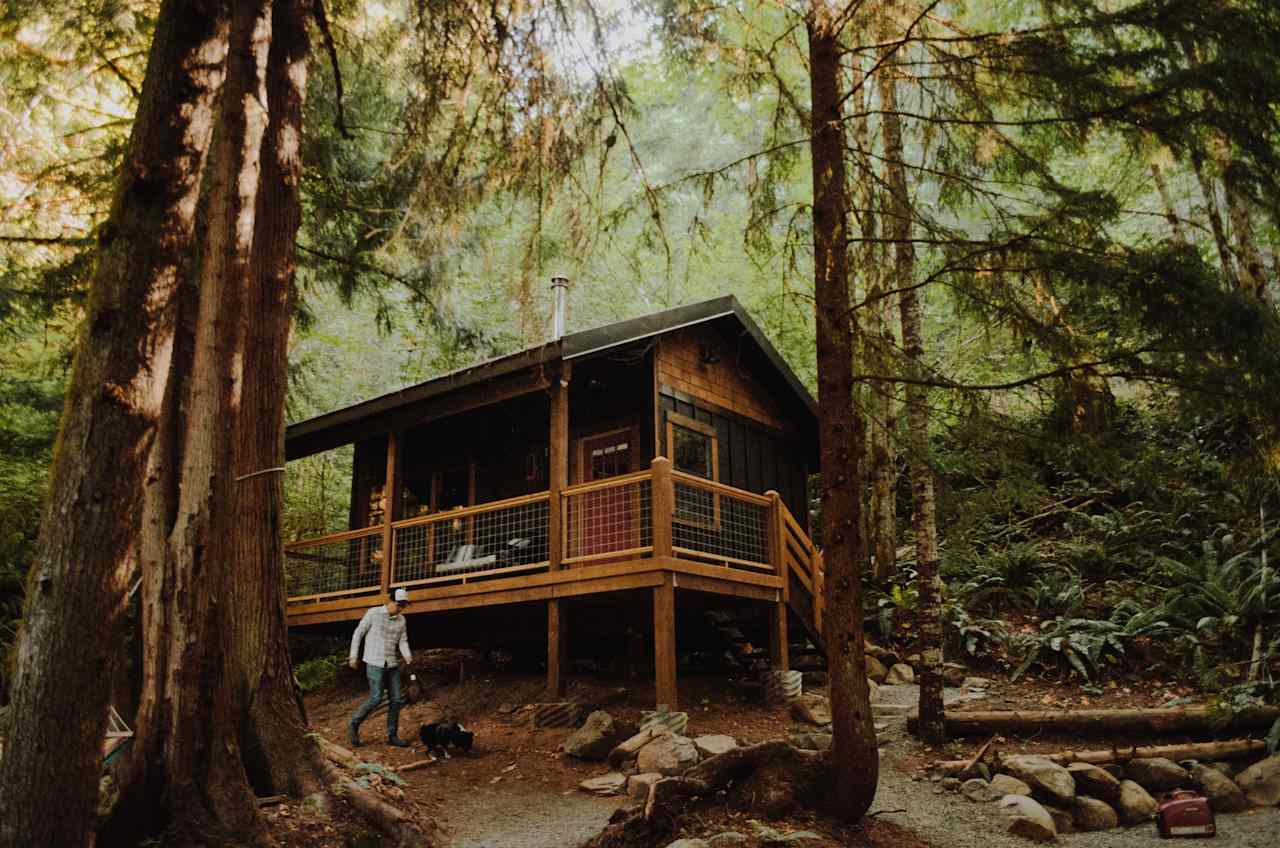
Star Hosts in St Petersburg

Bare RV Resort
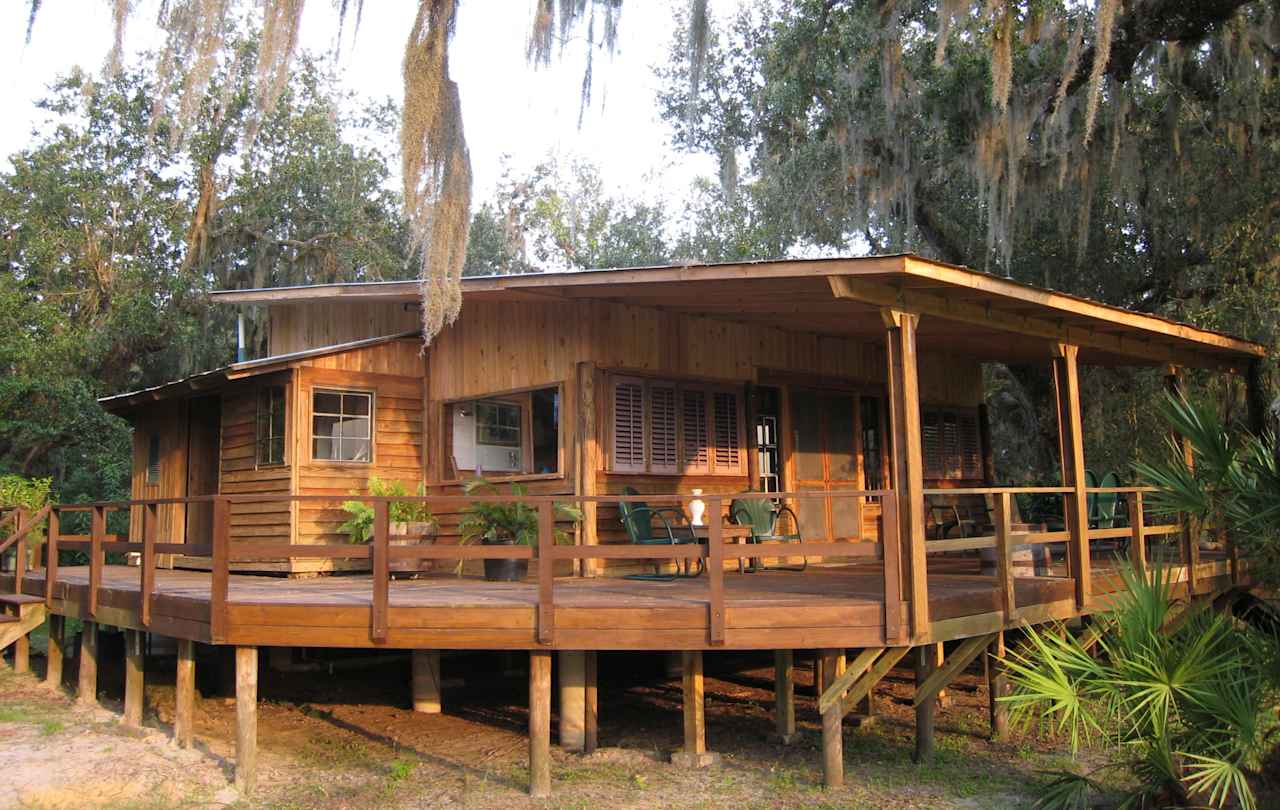
Rasayana Cove

By the Pond...
Dog-friendly getaways.
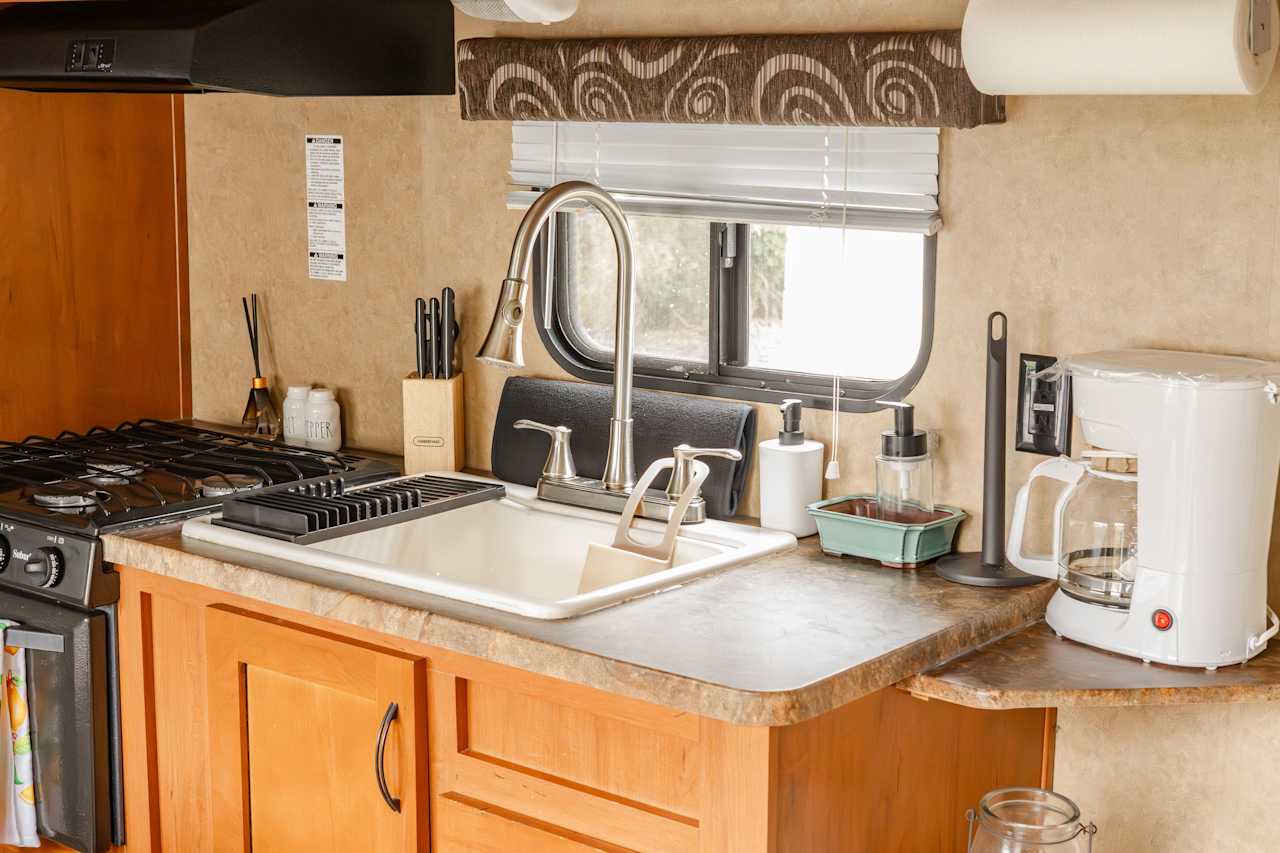
AhiYah Living

Beach Glamping

The Love Lodge
12 top glamping sites near st petersburg.

The Happy Camper

Tampa Glamper

Tiny House on Circle C Farm

Brenner Groves
Available this weekend, nearby parks, explore the area’s public lands..
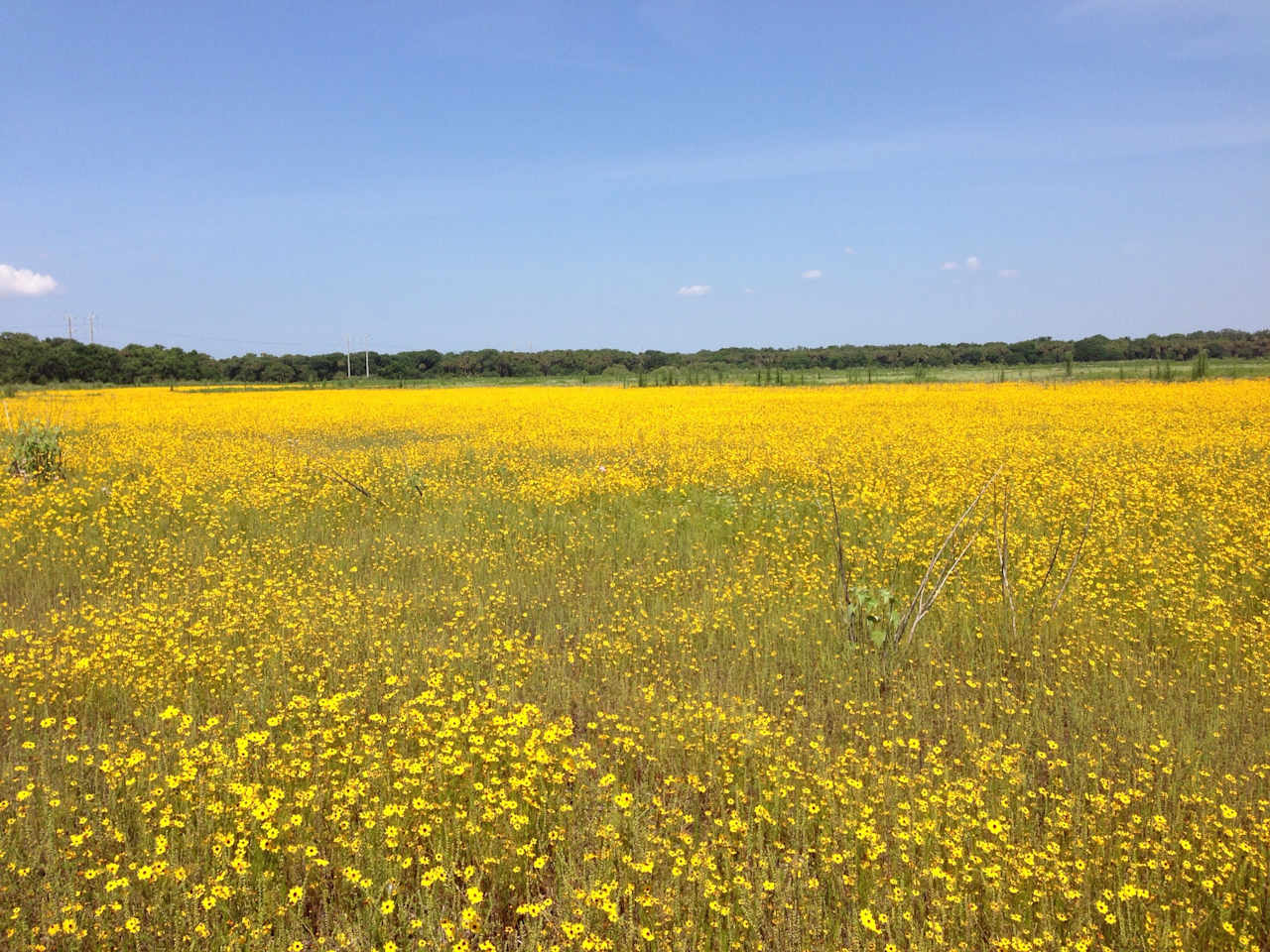
Petersburg.
Glamping near St Petersburg guide
Welcome to Hipcamp , your go-to website for all your camping needs! If you're looking for a glamping experience near St Petersburg, Florida, you're in luck. We have over 195 options available specifically for glamping in that area. With accommodations like Rasayana Cove (158 reviews), GOLDEN OAKS (117 reviews), and Moondancing Meadows (79 reviews), you can trust that you'll have a top-notch experience. Plus, with popular amenities like toilets, trash, and potable water, you'll have everything you need for a comfortable stay. If you're into off-roading, horseback riding, or any other outdoor activities, you'll find plenty of opportunities to indulge in your favorite pastimes. So pack your bags and get ready for an unforgettable glamping adventure in beautiful St Petersburg, Florida!
Popular St Petersburg trips
Top parks near st petersburg, top cities near st petersburg, best camping near me, safety at hipcamp.

Safety partners
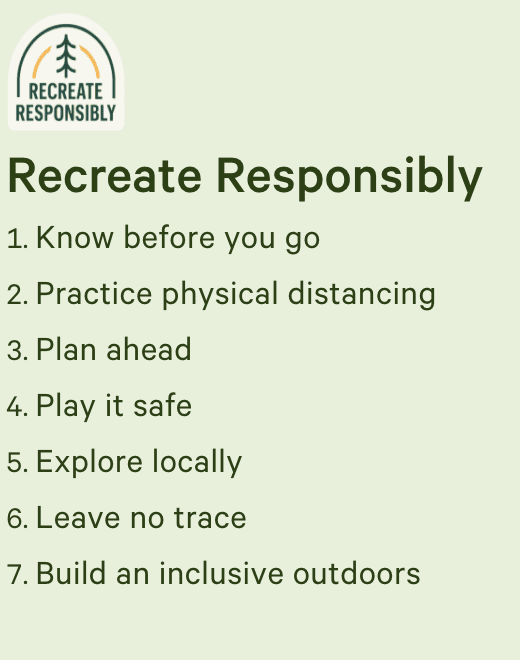

Suggested Searches
- Climate Change
- Expedition 64
- Mars perseverance
- SpaceX Crew-2
- International Space Station
- View All Topics A-Z
Humans in Space
Earth & climate, the solar system, the universe, aeronautics, learning resources, news & events.
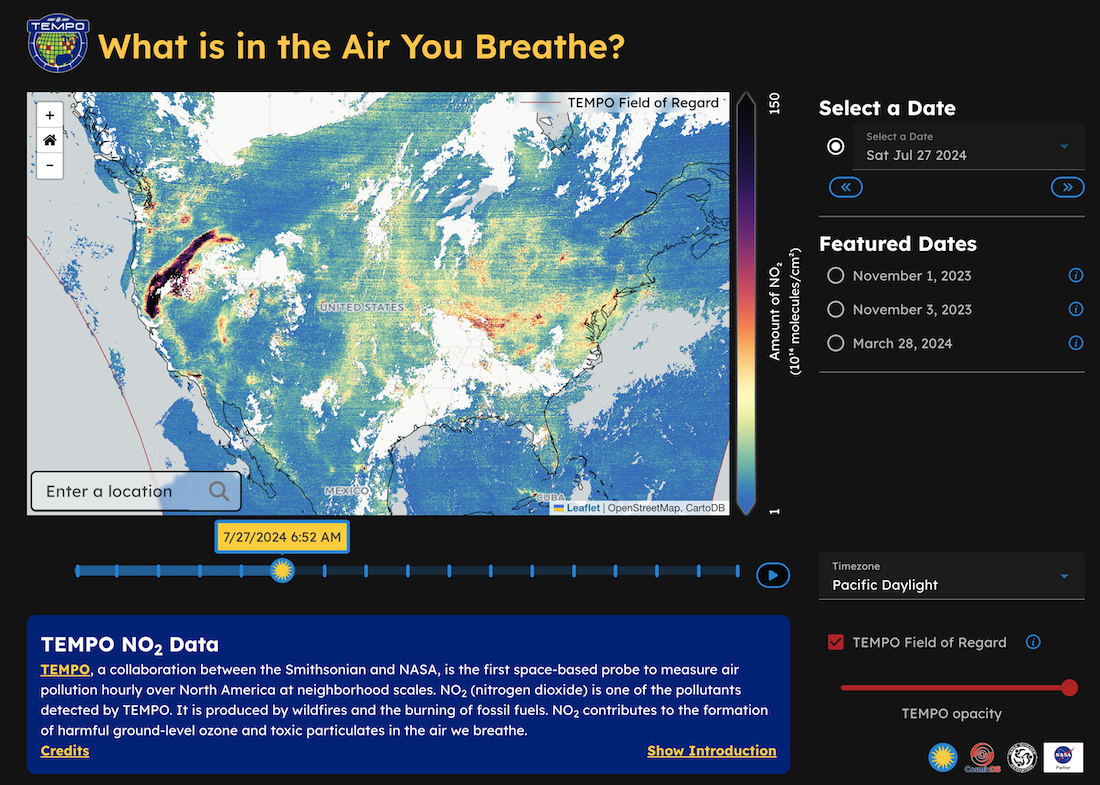
New TEMPO Cosmic Data Story Makes Air Quality Data Publicly Available
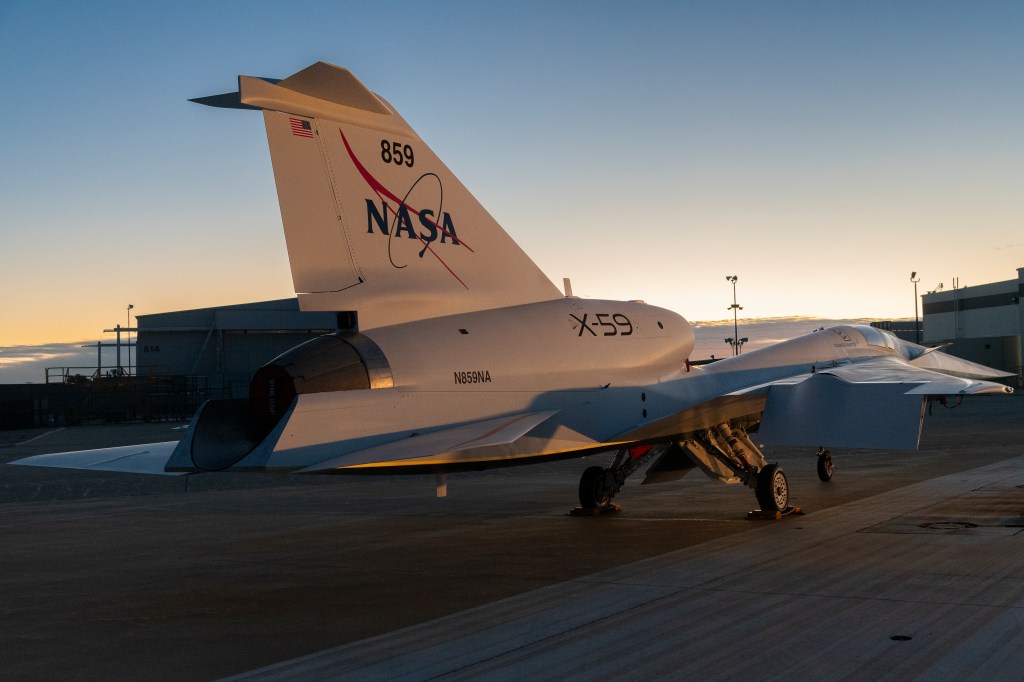
NASA’s X-59 Progresses Through Tests on the Path to Flight

NASA Demonstrates ‘Ultra-Cool’ Quantum Sensor for First Time in Space
- Search All NASA Missions
- A to Z List of Missions
- Upcoming Launches and Landings
- Spaceships and Rockets
- Communicating with Missions
- James Webb Space Telescope
- Hubble Space Telescope
- Why Go to Space
- Commercial Space
- Destinations
- Living in Space
- Explore Earth Science
- Earth, Our Planet
- Earth Science in Action
- Earth Multimedia
- Earth Science Researchers
- Pluto & Dwarf Planets
- Asteroids, Comets & Meteors
- The Kuiper Belt
- The Oort Cloud
- Skywatching
- The Search for Life in the Universe
- Black Holes
- The Big Bang
- Dark Energy & Dark Matter
- Earth Science
- Planetary Science
- Astrophysics & Space Science
- The Sun & Heliophysics
- Biological & Physical Sciences
- Lunar Science
- Citizen Science
- Astromaterials
- Aeronautics Research
- Human Space Travel Research
- Science in the Air
- NASA Aircraft
- Flight Innovation
- Supersonic Flight
- Air Traffic Solutions
- Green Aviation Tech
- Drones & You
- Technology Transfer & Spinoffs
- Space Travel Technology
- Technology Living in Space
- Manufacturing and Materials
- Science Instruments
- For Kids and Students
- For Educators
- For Colleges and Universities
- For Professionals
- Science for Everyone
- Requests for Exhibits, Artifacts, or Speakers
- STEM Engagement at NASA
- NASA's Impacts
- Centers and Facilities
- Directorates
- Organizations
- People of NASA
- Internships
- Our History
- Doing Business with NASA
- Get Involved
NASA en Español
- Aeronáutica
- Ciencias Terrestres
- Sistema Solar
- All NASA News
- Video Series on NASA+
- Newsletters
- Social Media
- Media Resources
- Upcoming Launches & Landings
- Virtual Events
- Sounds and Ringtones
- Interactives
- STEM Multimedia
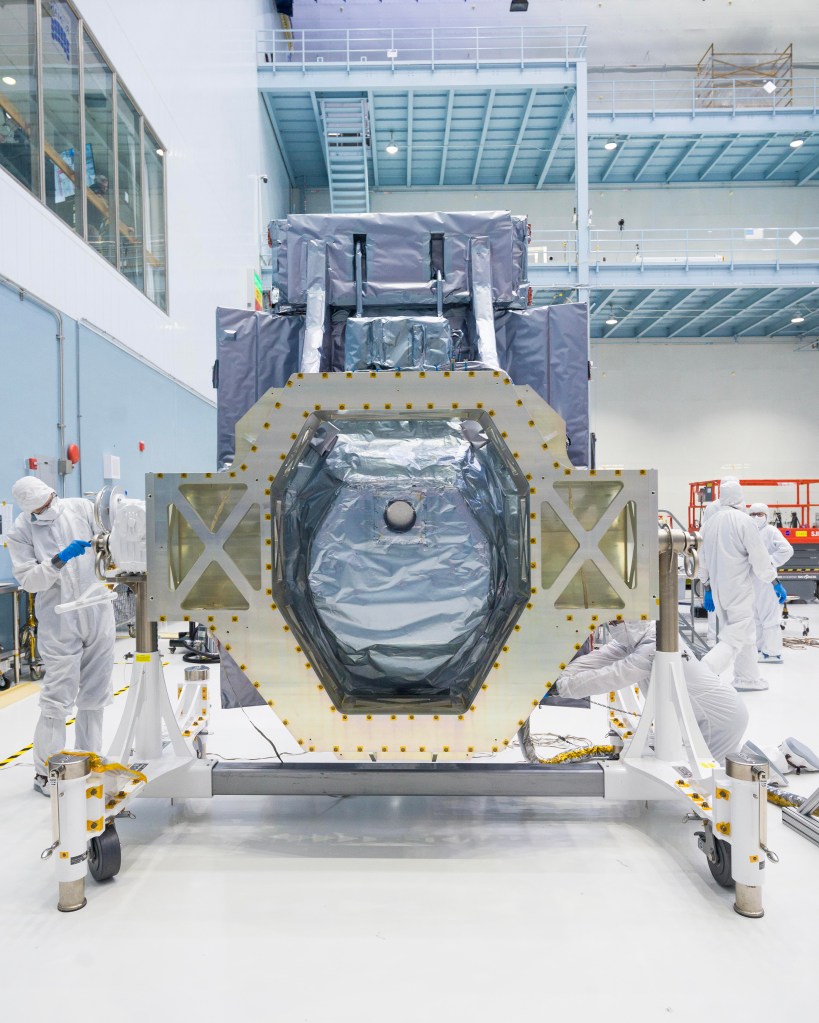
Primary Instrument for Roman Space Telescope Arrives at NASA Goddard
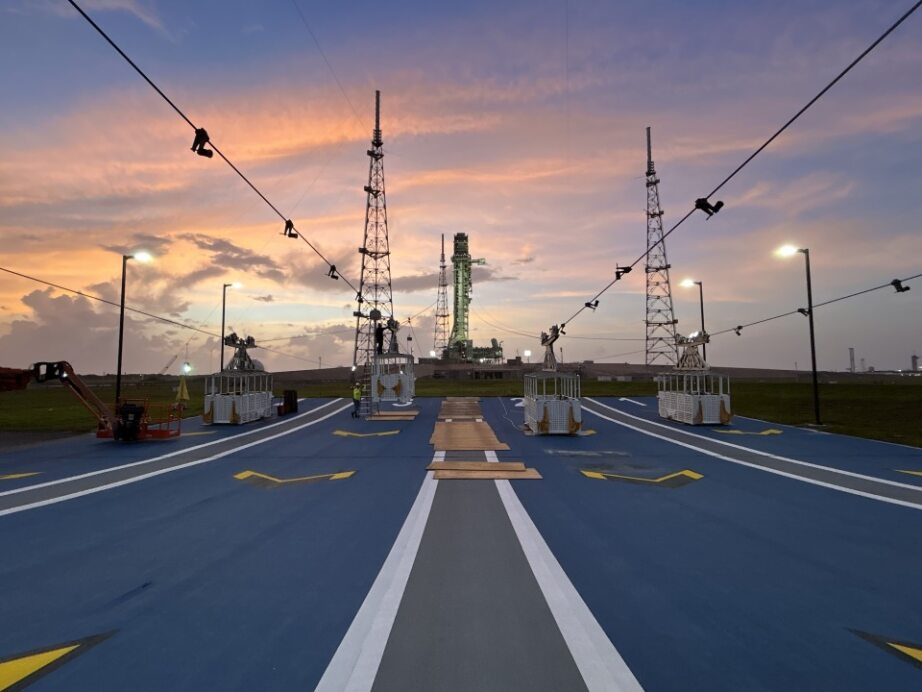
Artemis Emergency Egress System Emphasizes Crew Safety
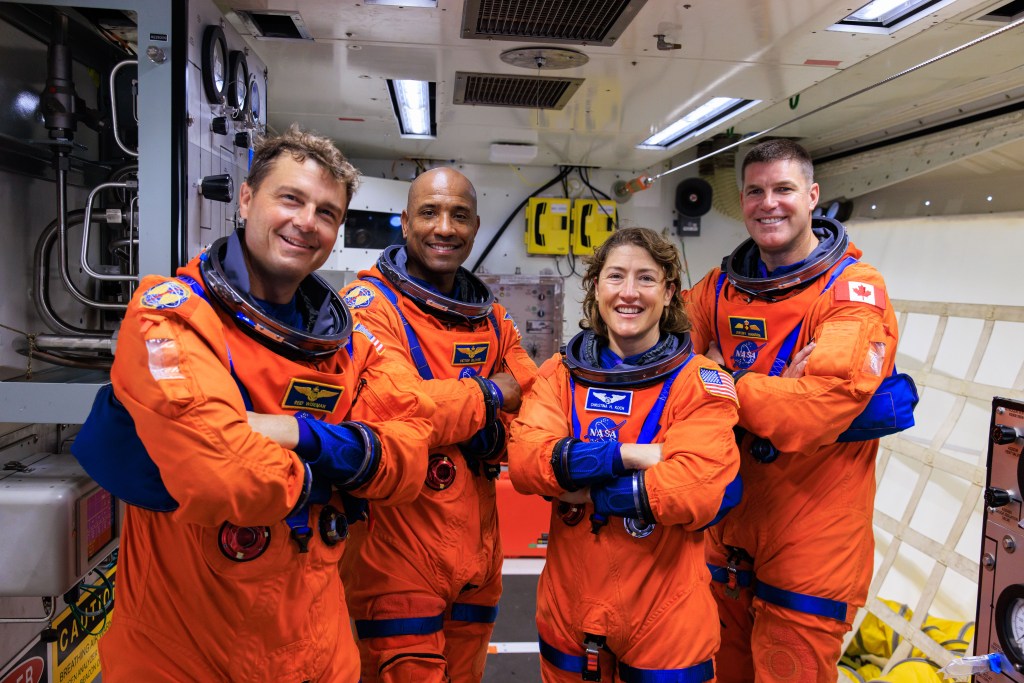
What’s New With the Artemis II Crew
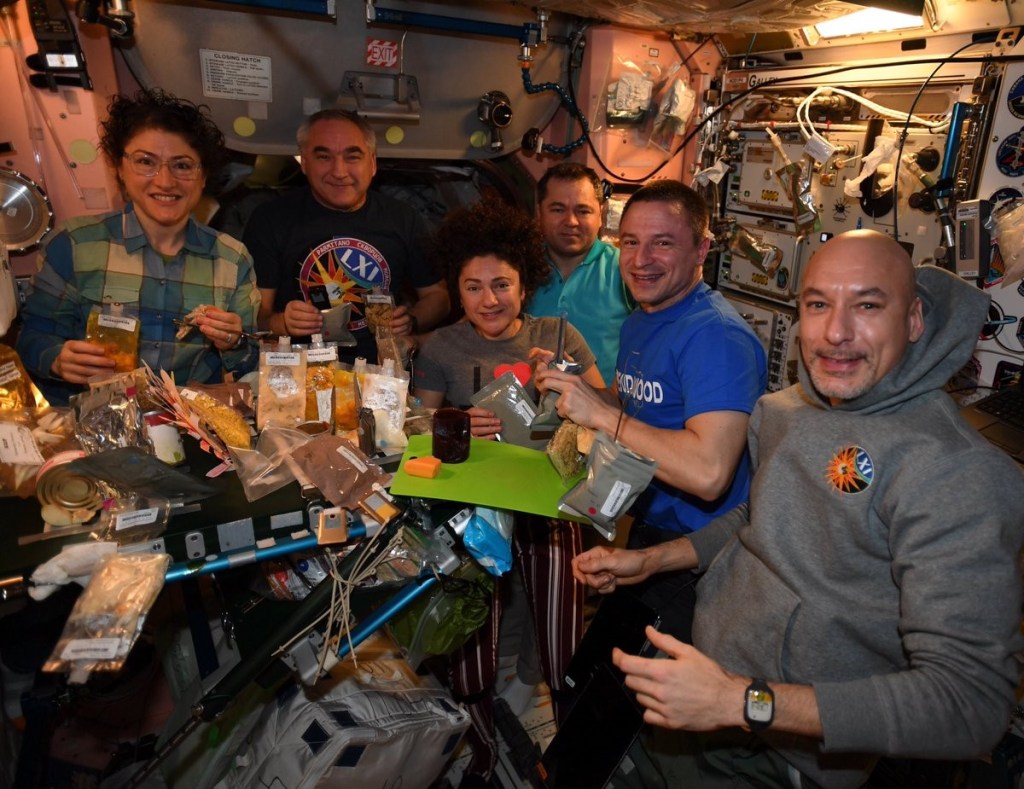
Food in Space
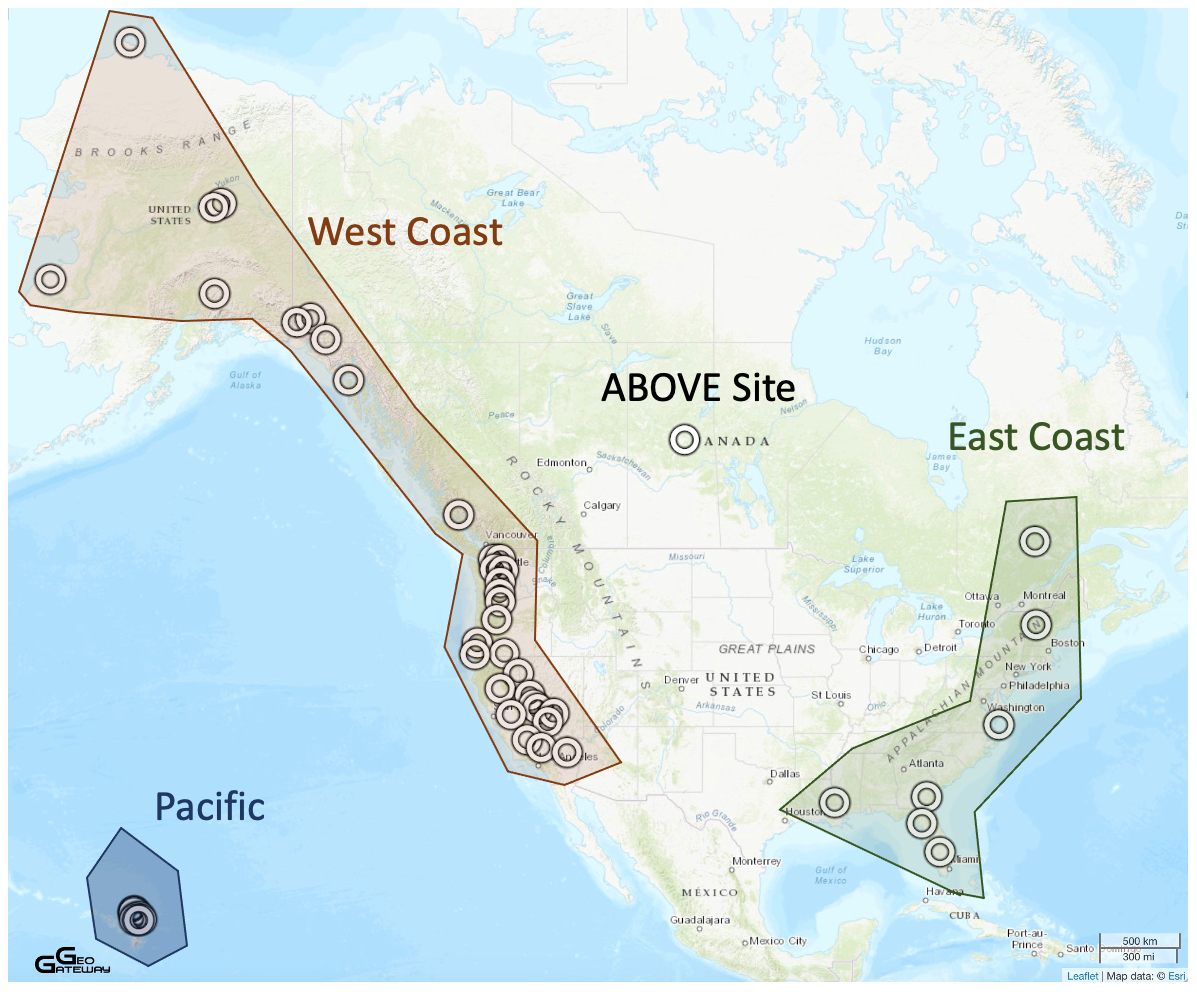
Airborne Surface, Cryosphere, Ecosystem, and Nearshore Topography
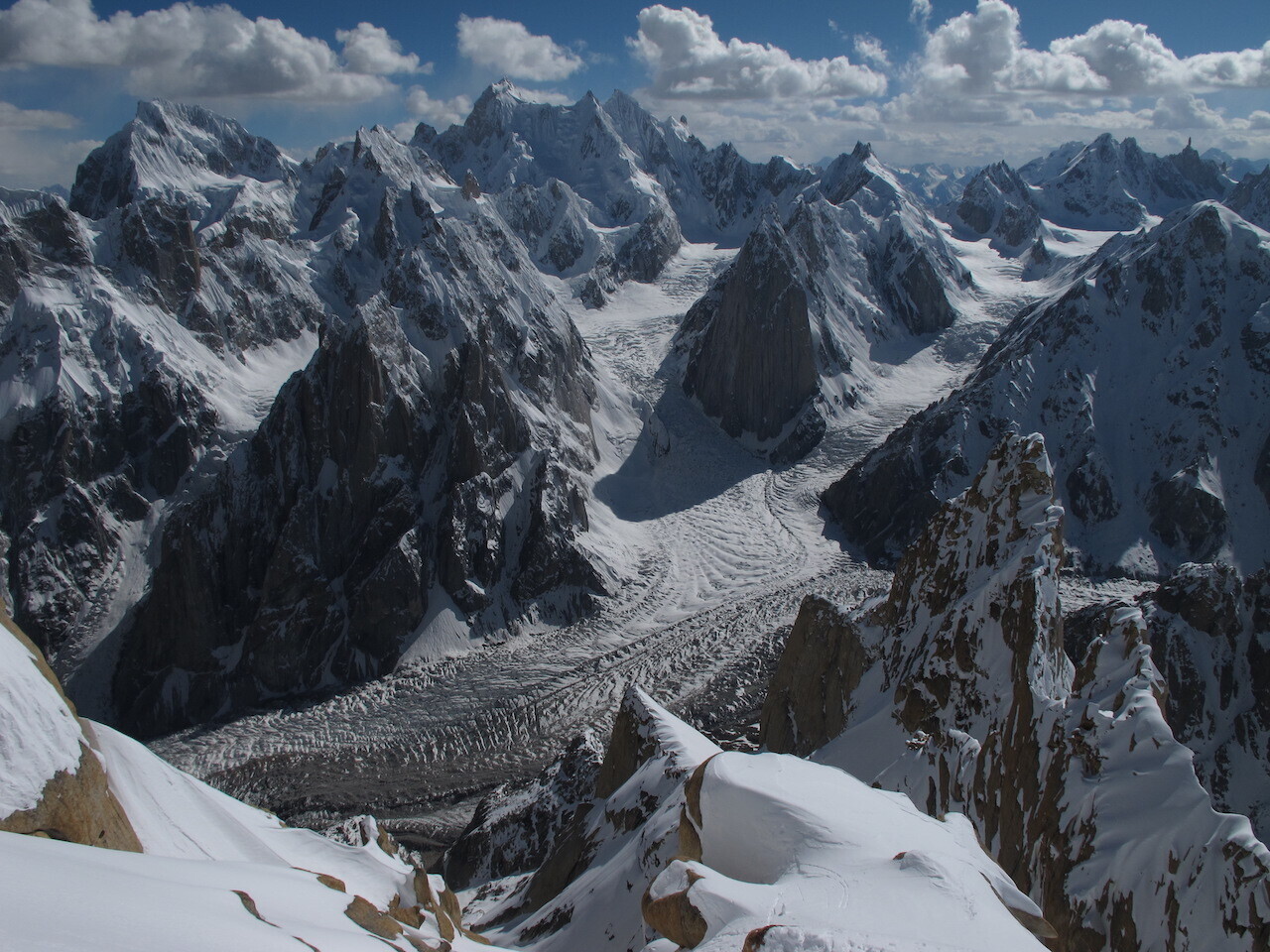
Amendment 42: A.30 Understanding Changes in High Mountain Asia Deferred to ROSES-25
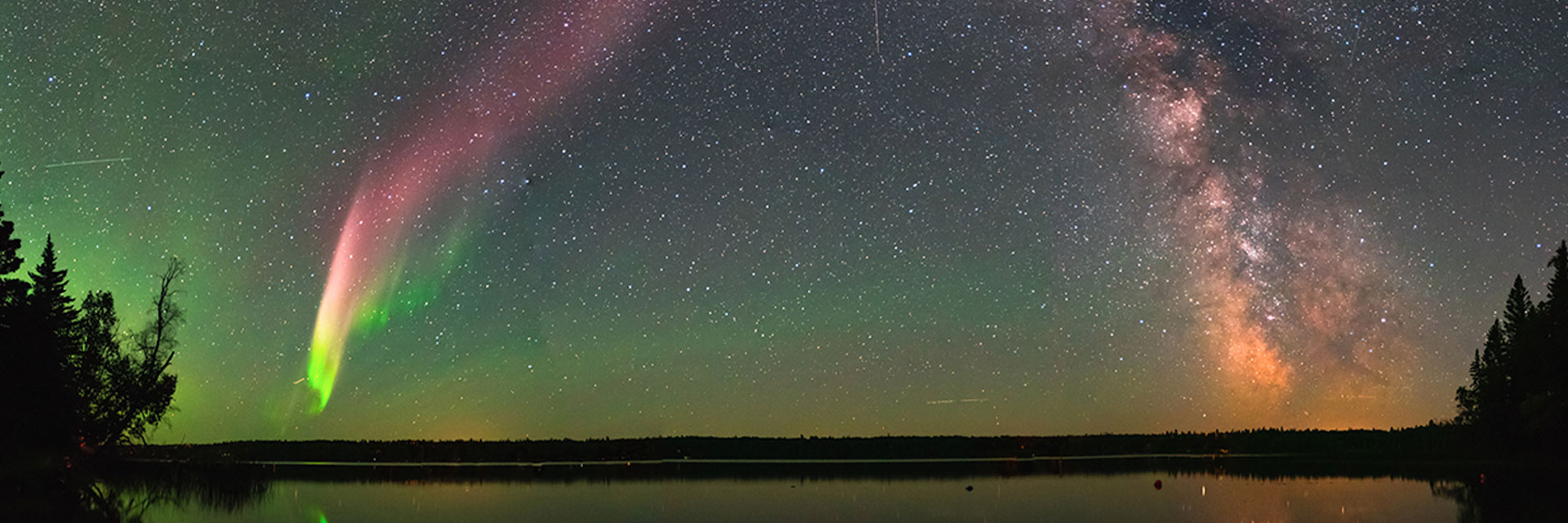
Citizen Science Earth Projects
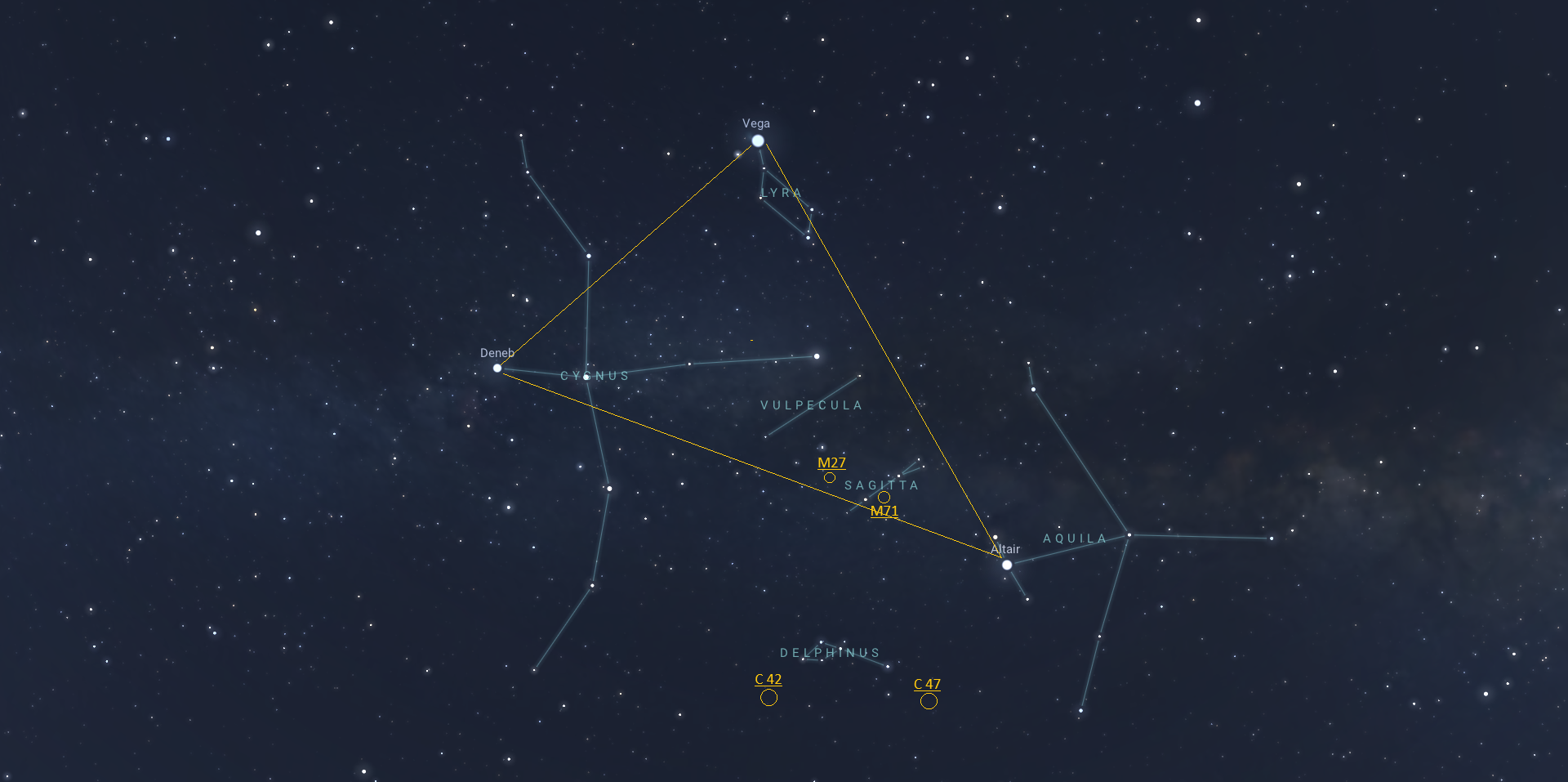
The Summer Triangle’s Hidden Treasures

Solar Eclipse Data Story Helps the Public Visualize the April 2024 Total Eclipse

NASA’s Perseverance Rover to Begin Long Climb Up Martian Crater Rim

NASA Selects 5 New Roman Technology Fellows in Astrophysics
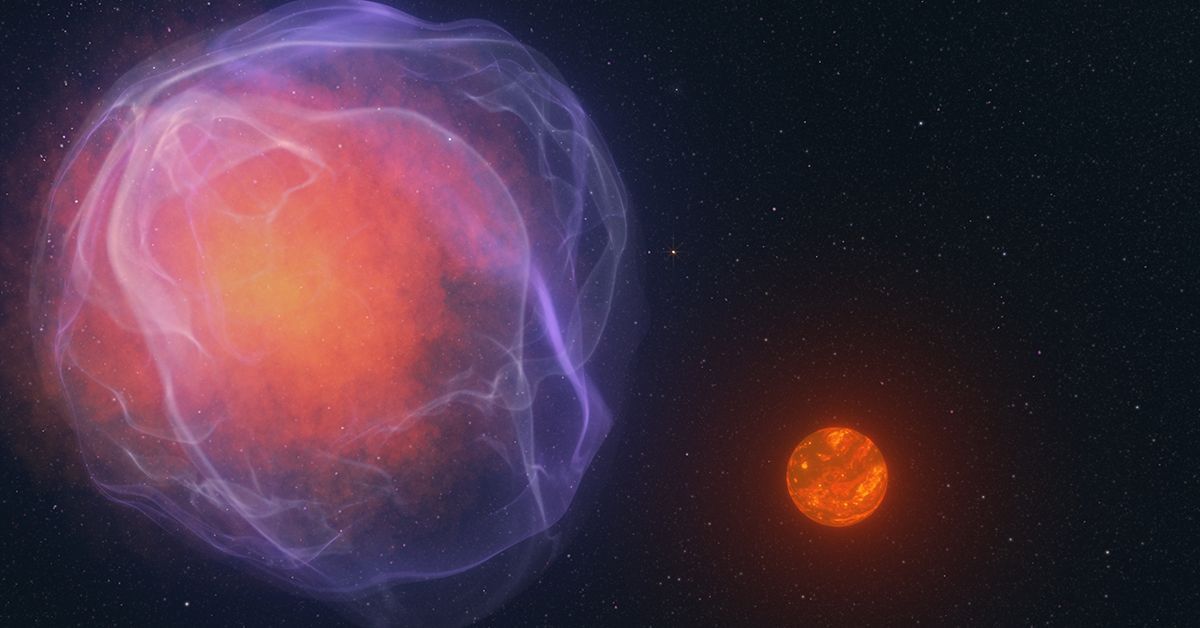
NASA Citizen Scientists Spot Object Moving 1 Million Miles Per Hour
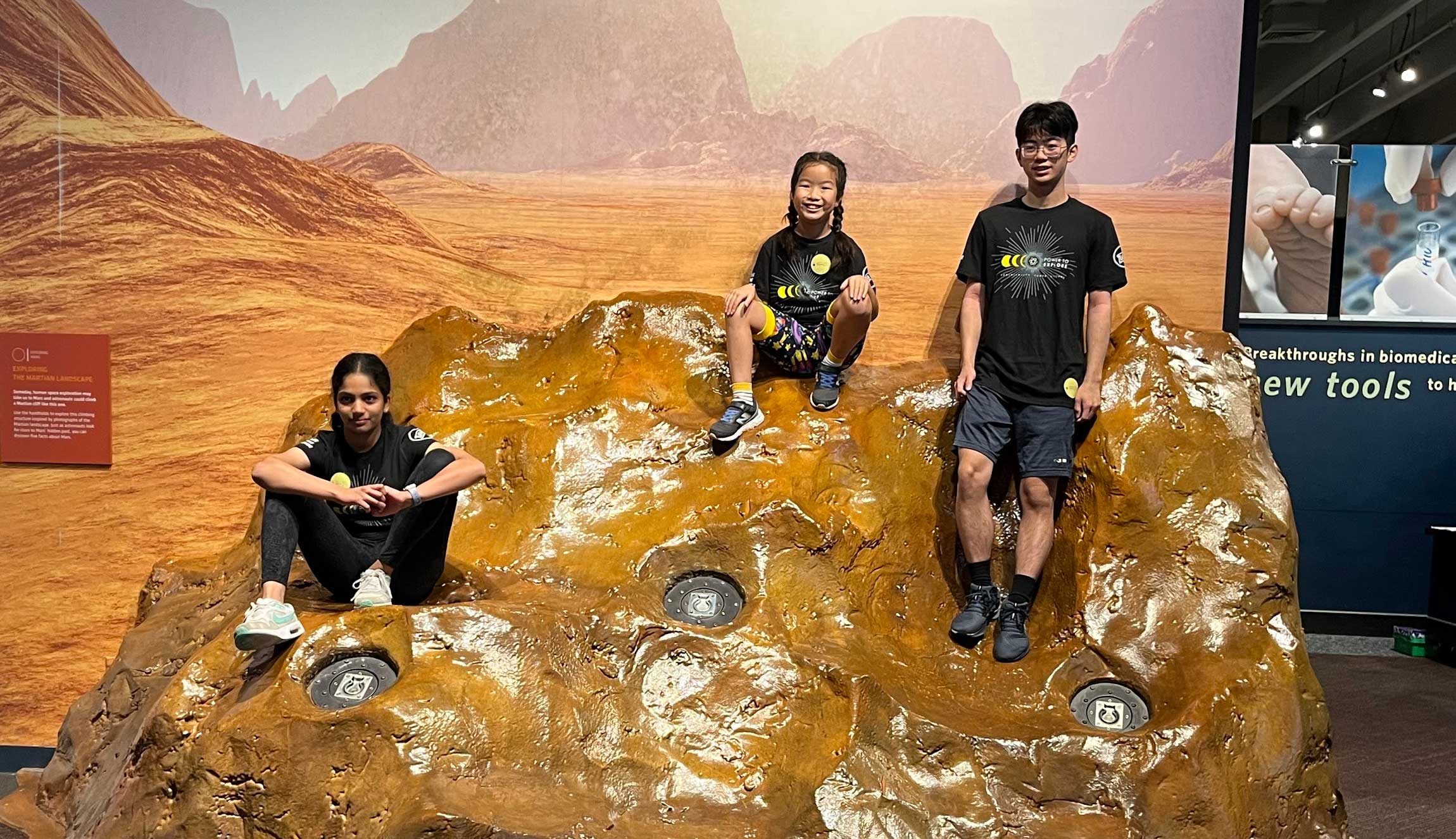
Perseverance Pays Off for Student Challenge Winners
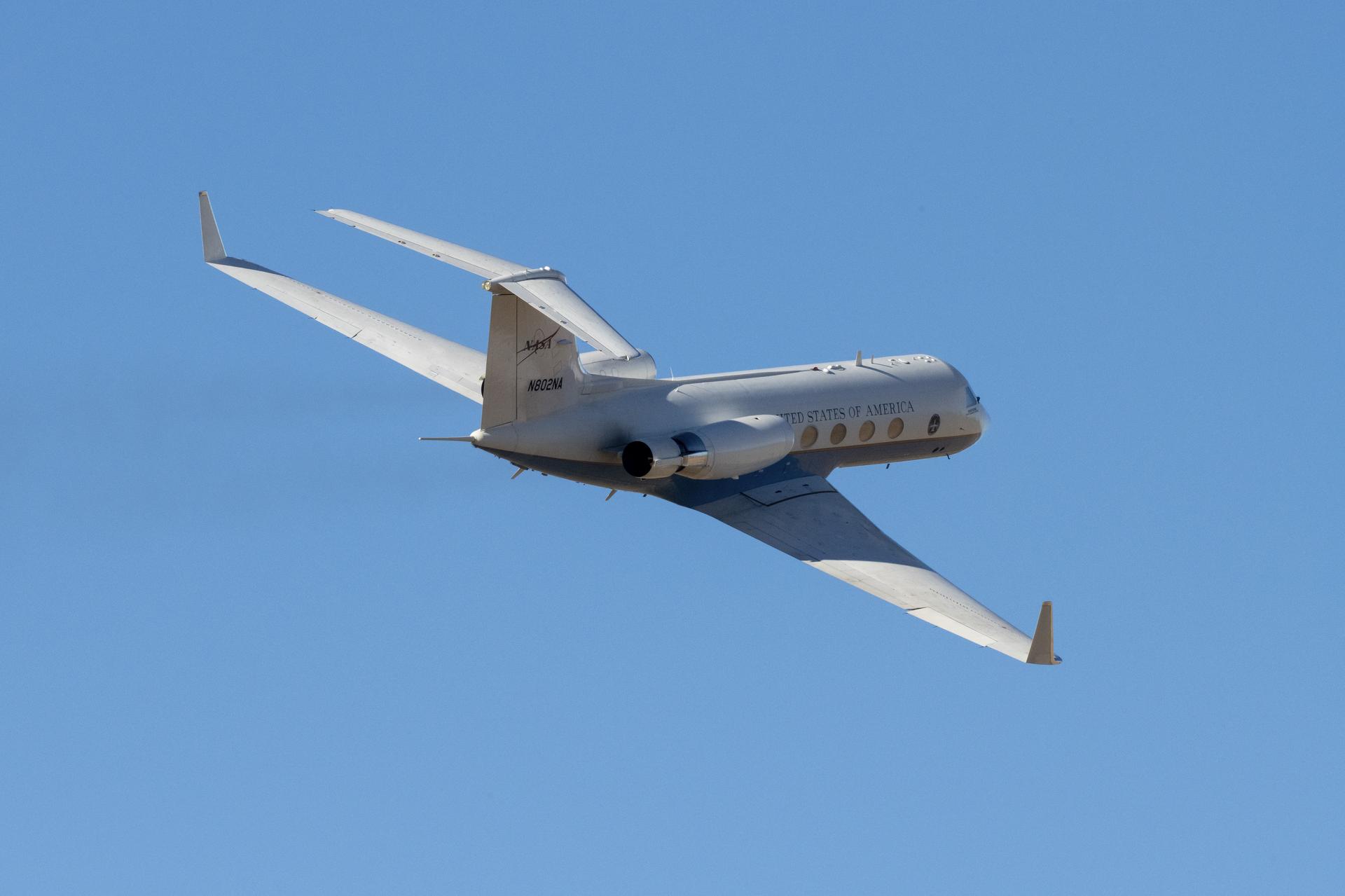
NASA Aircraft Gathers 150 Hours of Data to Better Understand Earth
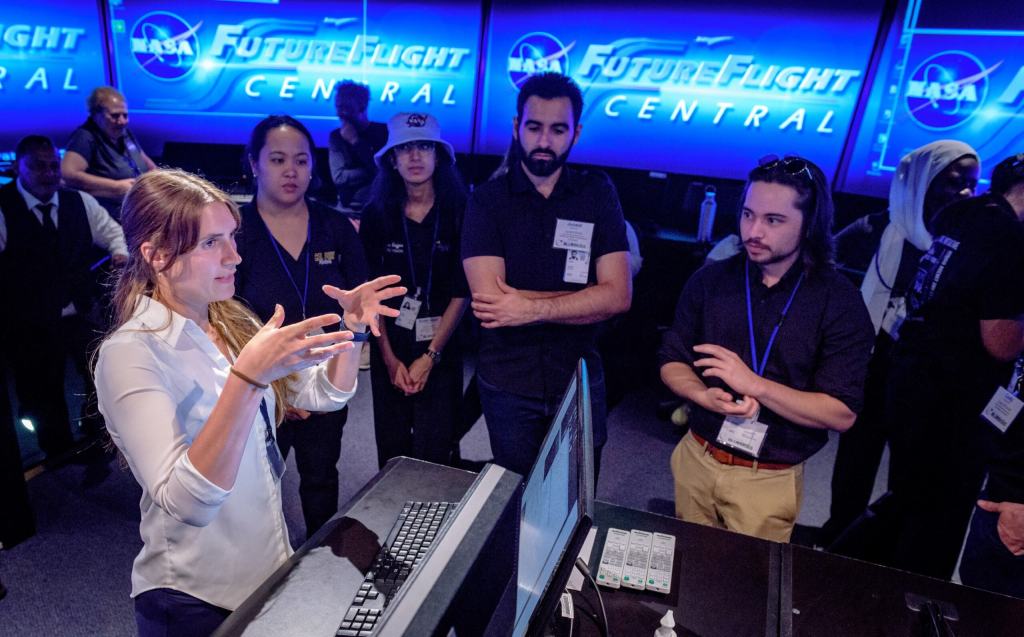
Collegiate Teams to Focus on Aviation Solutions for Agriculture in 2025 Gateways to Blue Skies Competition
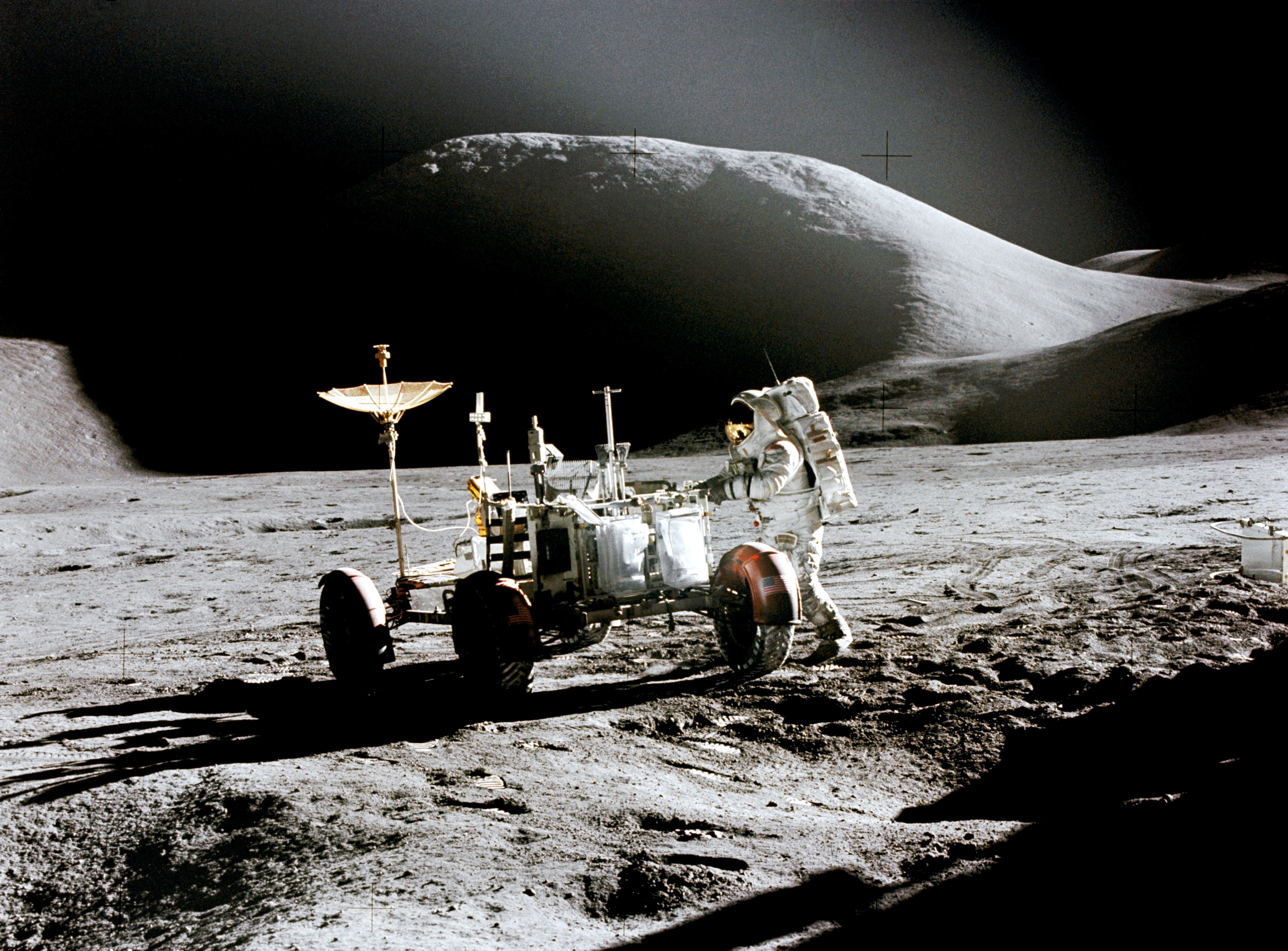
Amendment 41: DRAFT F.13 Lunar Terrain Vehicle Instruments Program Released for Community Comment.
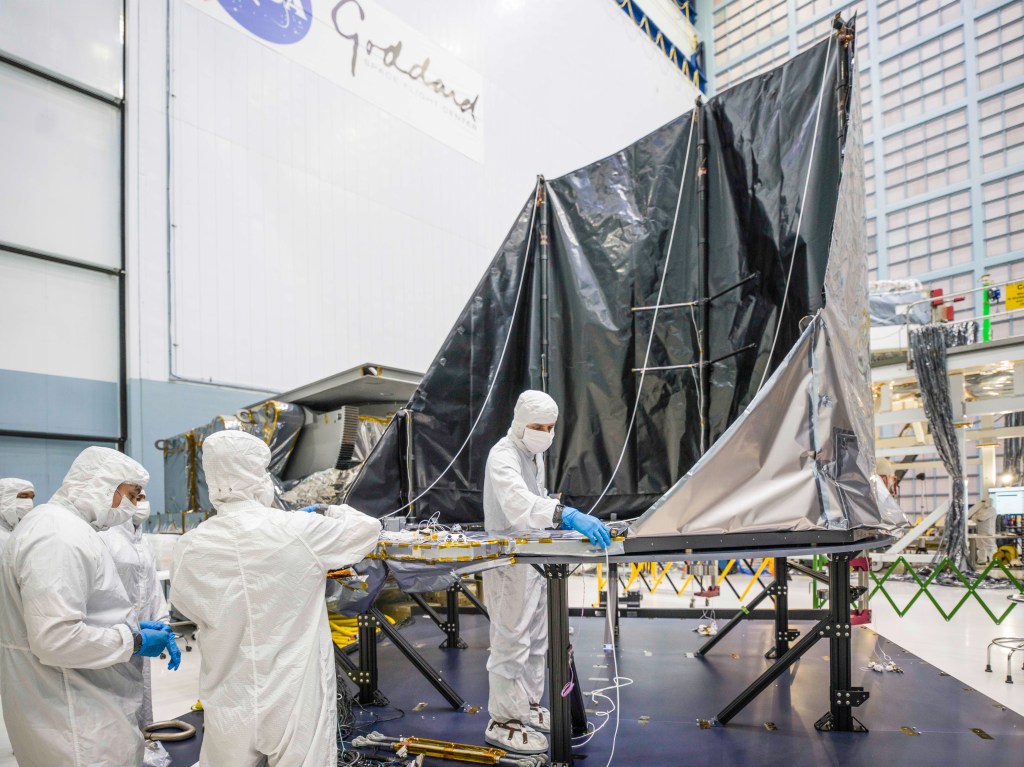
NASA Tests Deployment of Roman Space Telescope’s ‘Visor’

How Do I Navigate NASA Learning Resources and Opportunities?

NASA Challenge Seeks ‘Cooler’ Solutions for Deep Space Exploration
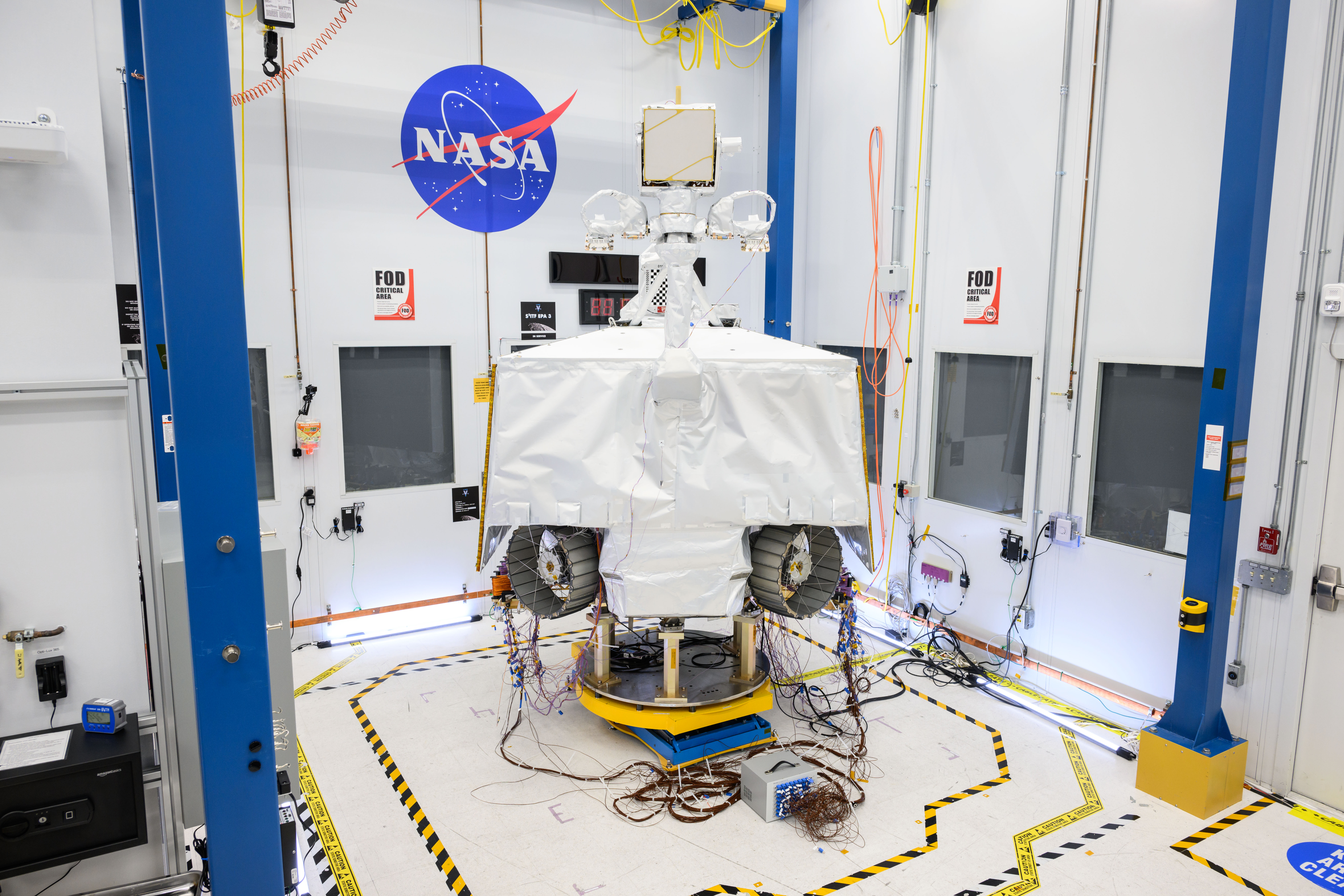
NASA Explores Industry, Partner Interest in Using VIPER Moon Rover
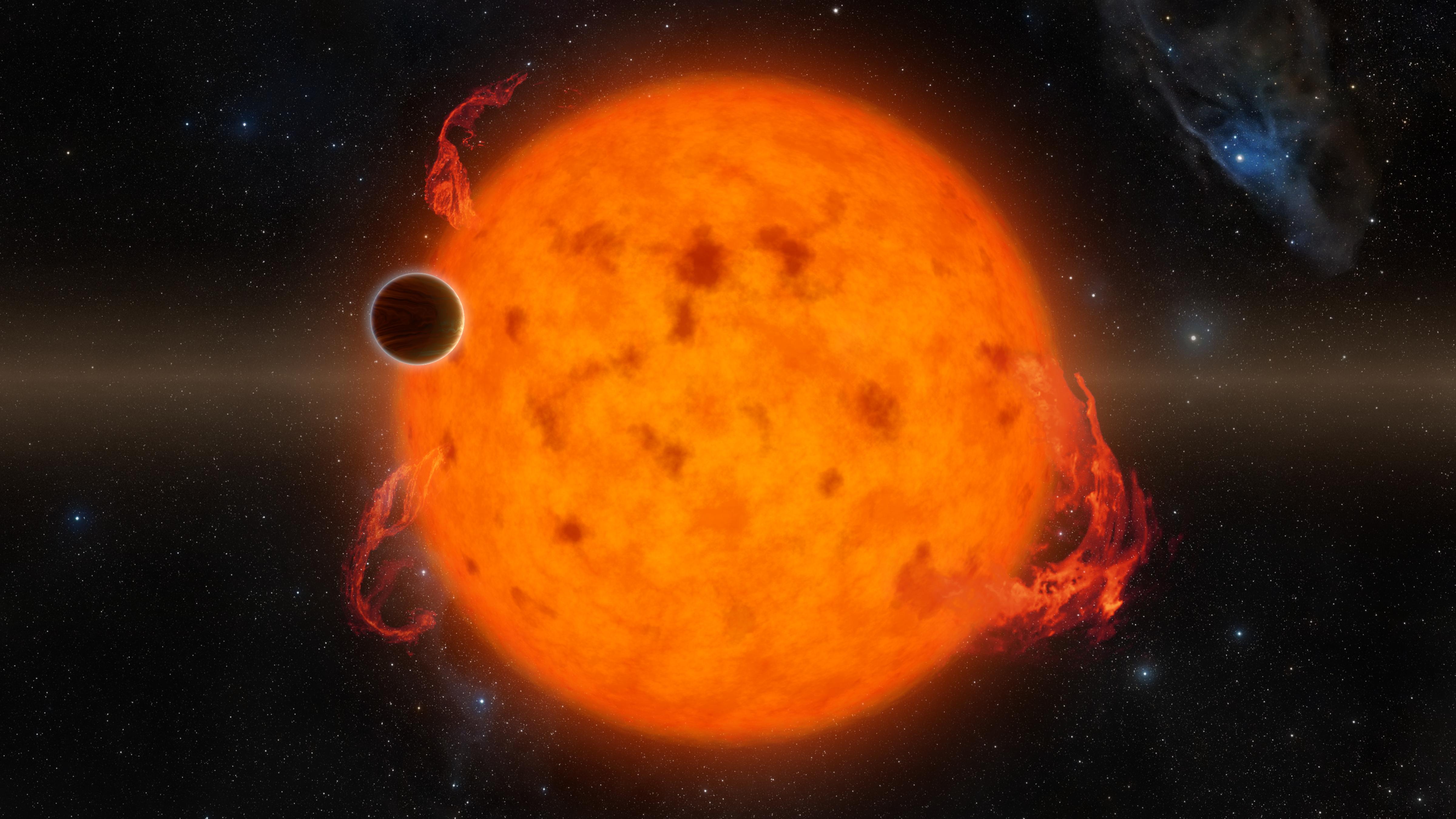
How NASA Citizen Science Fuels Future Exoplanet Research
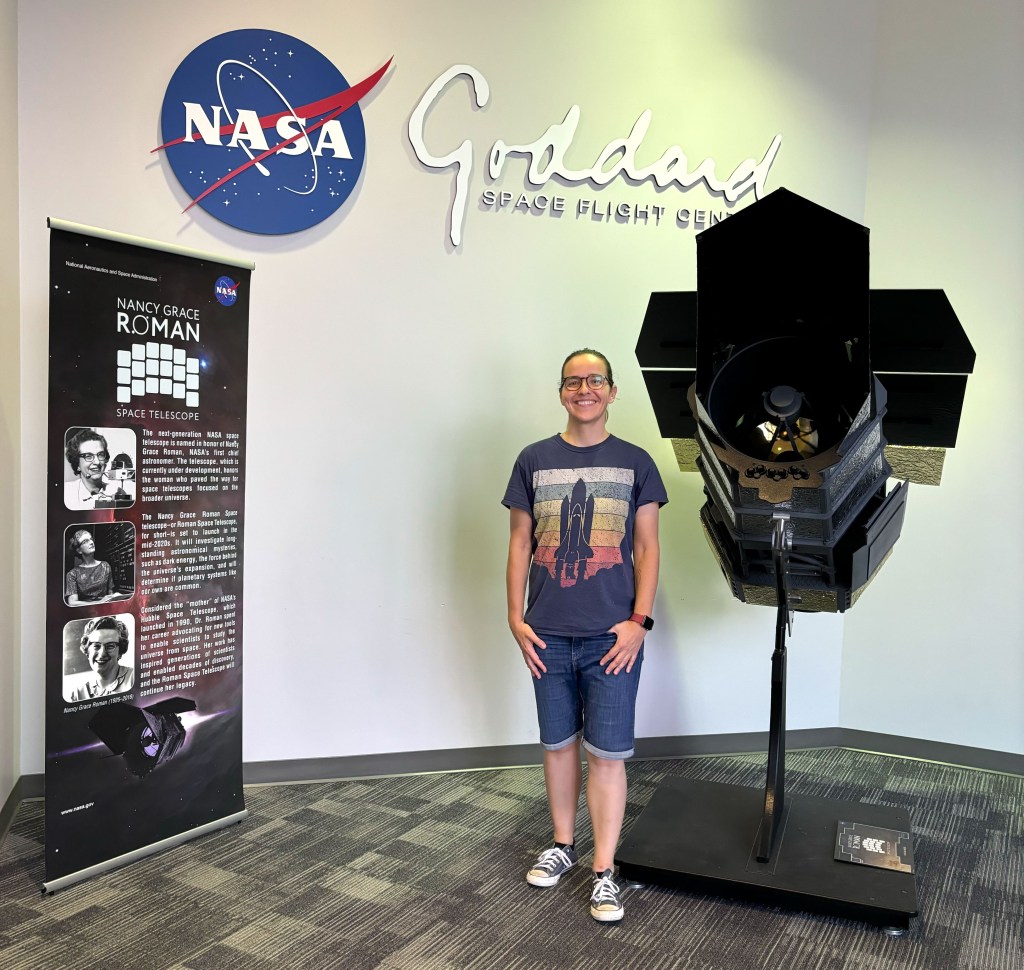
There Are No Imaginary Boundaries for Dr. Ariadna Farrés-Basiana

Astronauta de la NASA Frank Rubio

Diez maneras en que los estudiantes pueden prepararse para ser astronautas
Nasa optical navigation tech could streamline planetary exploration.
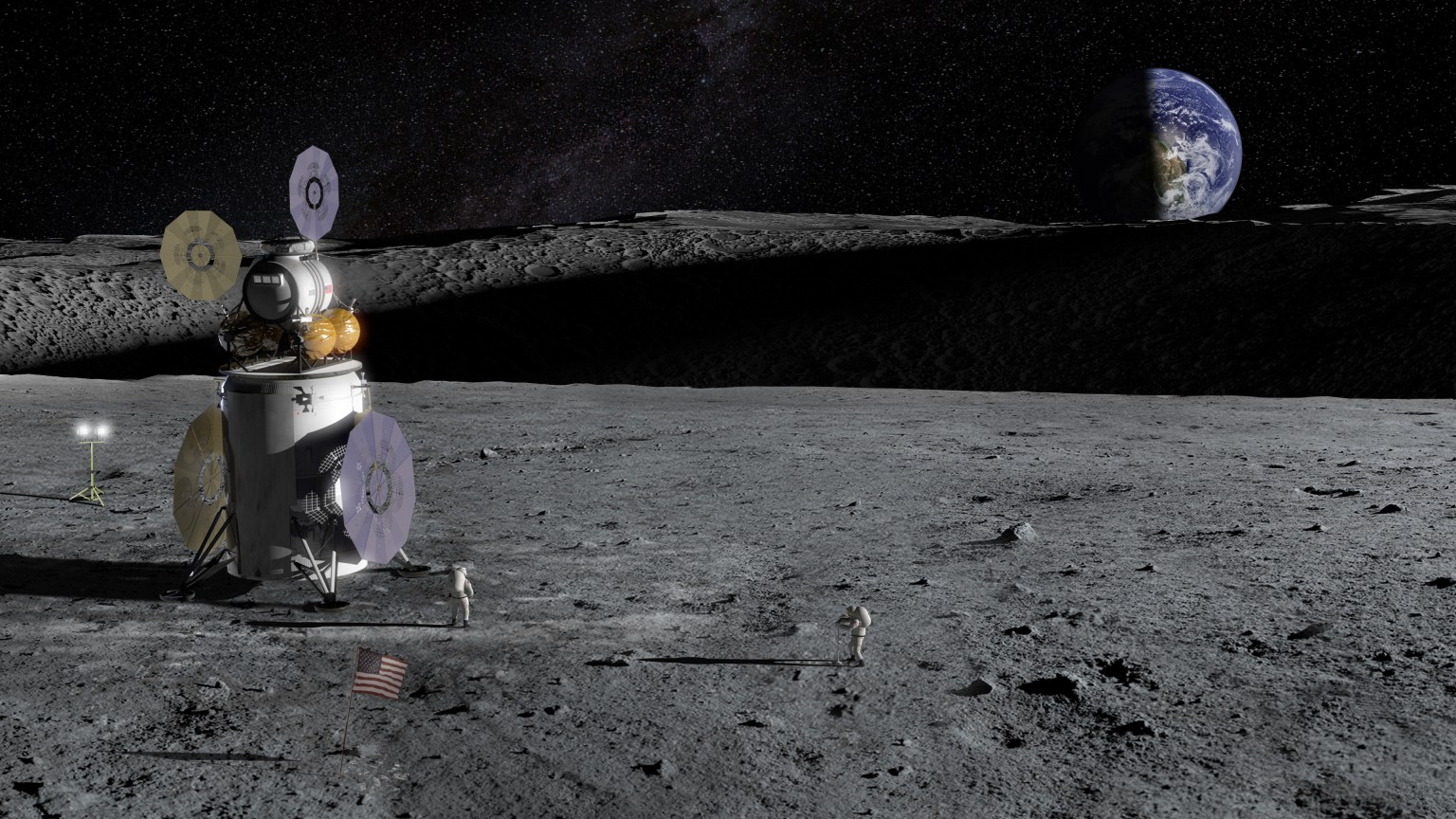
Goddard Digital Team
Virtual world development, find your way with a photo, a visual perception algorithm to detect craters.
- As astronauts and rovers explore uncharted worlds, finding new ways of navigating these bodies is essential in the absence of traditional navigation systems like GPS.
- Optical navigation relying on data from cameras and other sensors can help spacecraft — and in some cases, astronauts themselves — find their way in areas that would be difficult to navigate with the naked eye.
- Three NASA researchers are pushing optical navigation tech further, by making cutting edge advancements in 3D environment modeling, navigation using photography, and deep learning image analysis.
In a dim, barren landscape like the surface of the Moon, it can be easy to get lost. With few discernable landmarks to navigate with the naked eye, astronauts and rovers must rely on other means to plot a course.
As NASA pursues its Moon to Mars missions, encompassing exploration of the lunar surface and the first steps on the Red Planet, finding novel and efficient ways of navigating these new terrains will be essential. That’s where optical navigation comes in — a technology that helps map out new areas using sensor data.
NASA’s Goddard Space Flight Center in Greenbelt, Maryland, is a leading developer of optical navigation technology. For example, GIANT (the Goddard Image Analysis and Navigation Tool) helped guide the OSIRIS-REx mission to a safe sample collection at asteroid Bennu by generating 3D maps of the surface and calculating precise distances to targets.
Now, three research teams at Goddard are pushing optical navigation technology even further.
Chris Gnam, an intern at NASA Goddard, leads development on a modeling engine called Vira that already renders large, 3D environments about 100 times faster than GIANT. These digital environments can be used to evaluate potential landing areas, simulate solar radiation, and more.
While consumer-grade graphics engines, like those used for video game development, quickly render large environments, most cannot provide the detail necessary for scientific analysis. For scientists planning a planetary landing, every detail is critical.
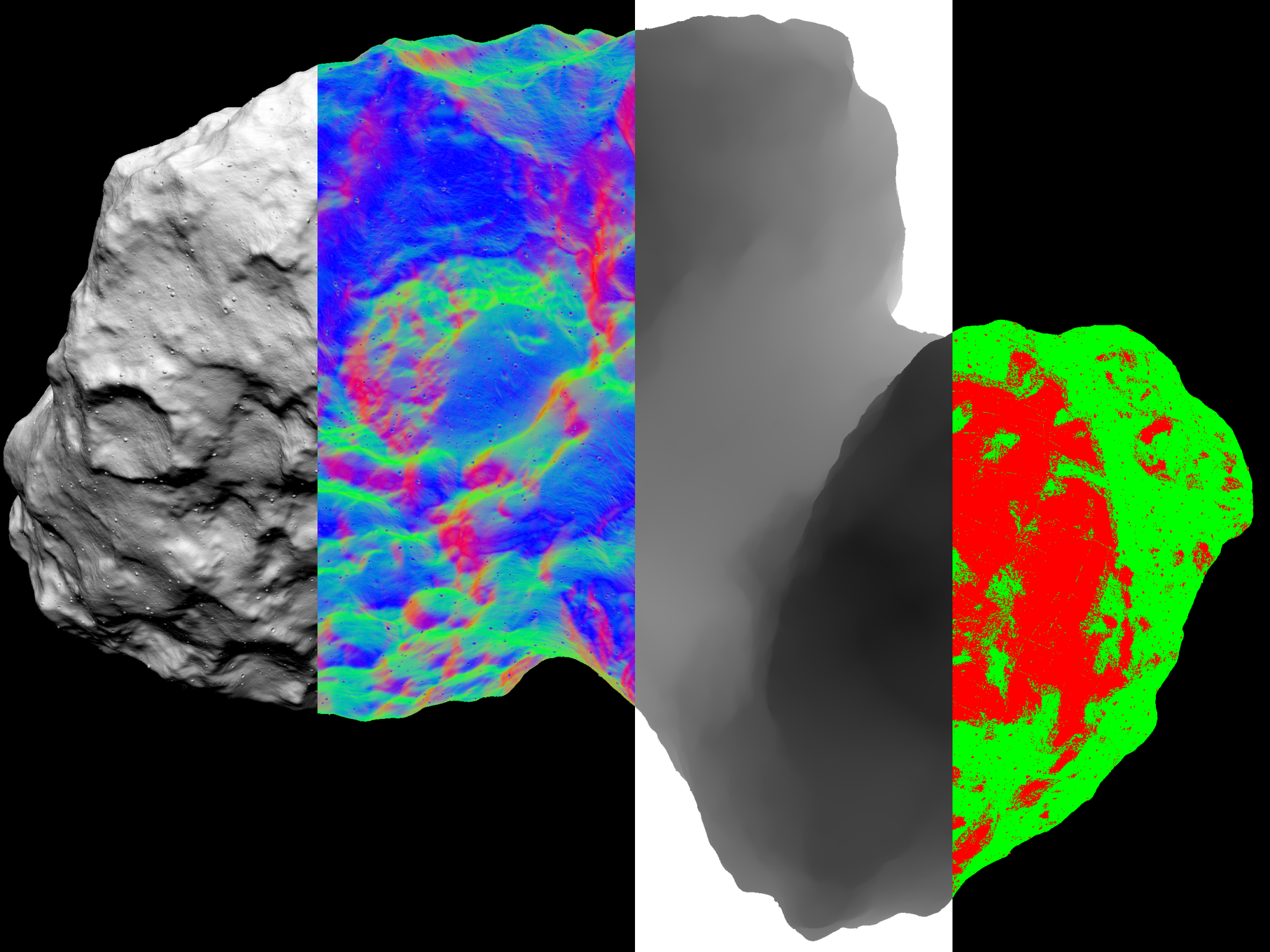
“Vira combines the speed and efficiency of consumer graphics modelers with the scientific accuracy of GIANT,” Gnam said. “This tool will allow scientists to quickly model complex environments like planetary surfaces.”
The Vira modeling engine is being used to assist with the development of LuNaMaps (Lunar Navigation Maps). This project seeks to improve the quality of maps of the lunar South Pole region which are a key exploration target of NASA’s Artemis missions.
Vira also uses ray tracing to model how light will behave in a simulated environment. While ray tracing is often used in video game development, Vira utilizes it to model solar radiation pressure, which refers to changes in momentum to a spacecraft caused by sunlight.
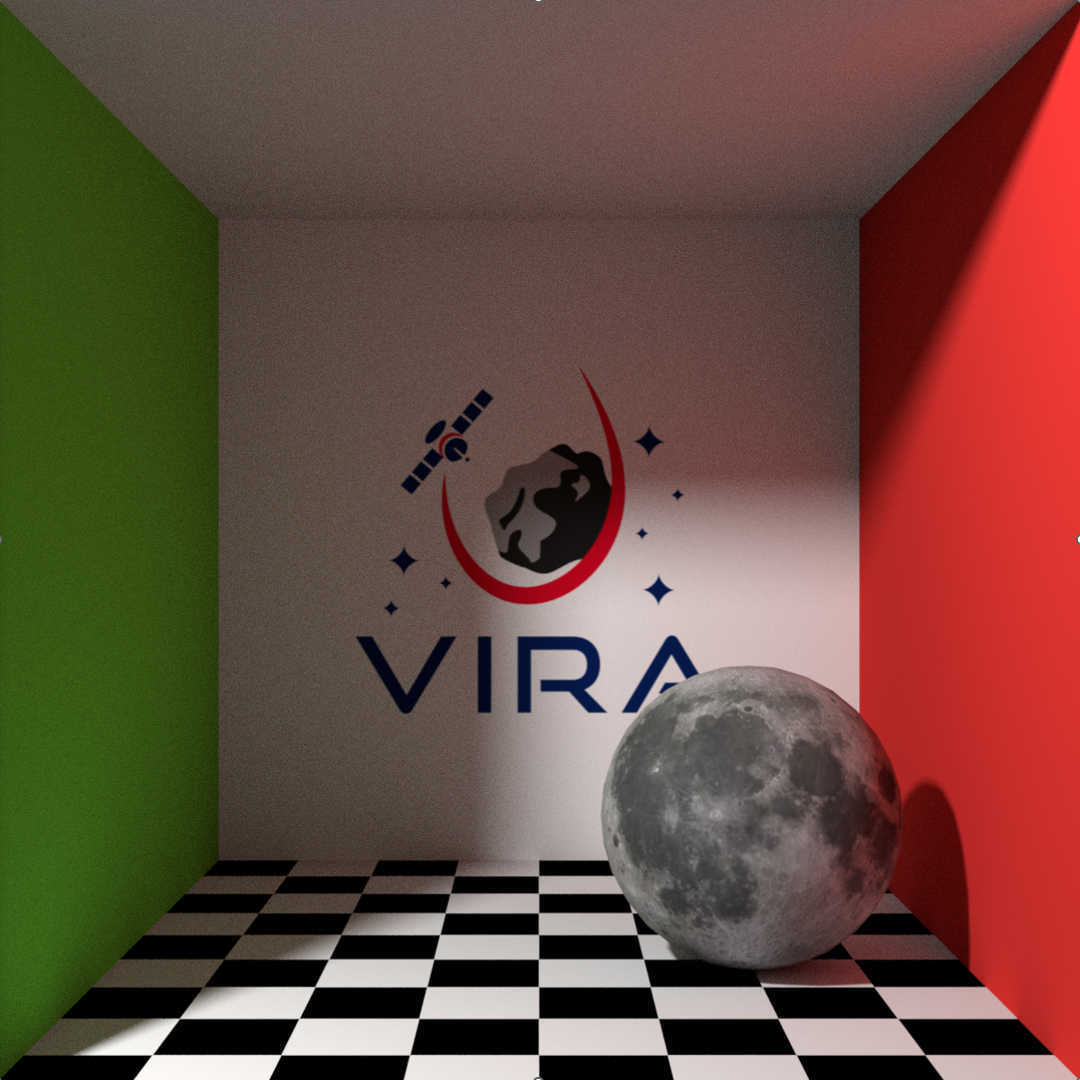
Another team at Goddard is developing a tool to enable navigation based on images of the horizon. Andrew Liounis, an optical navigation product design lead, leads the team, working alongside NASA Interns Andrew Tennenbaum and Will Driessen, as well as Alvin Yew, the gas processing lead for NASA’s DAVINCI mission.
An astronaut or rover using this algorithm could take one picture of the horizon, which the program would compare to a map of the explored area. The algorithm would then output the estimated location of where the photo was taken.
Using one photo, the algorithm can output with accuracy around hundreds of feet. Current work is attempting to prove that using two or more pictures, the algorithm can pinpoint the location with accuracy around tens of feet.
“We take the data points from the image and compare them to the data points on a map of the area,” Liounis explained. “It’s almost like how GPS uses triangulation, but instead of having multiple observers to triangulate one object, you have multiple observations from a single observer, so we’re figuring out where the lines of sight intersect.”
This type of technology could be useful for lunar exploration, where it is difficult to rely on GPS signals for location determination.
To automate optical navigation and visual perception processes, Goddard intern Timothy Chase is developing a programming tool called GAVIN (Goddard AI Verification and Integration) Tool Suit.
This tool helps build deep learning models, a type of machine learning algorithm that is trained to process inputs like a human brain. In addition to developing the tool itself, Chase and his team are building a deep learning algorithm using GAVIN that will identify craters in poorly lit areas, such as the Moon.
“As we’re developing GAVIN, we want to test it out,” Chase explained. “This model that will identify craters in low-light bodies will not only help us learn how to improve GAVIN, but it will also prove useful for missions like Artemis, which will see astronauts exploring the Moon’s south pole region — a dark area with large craters — for the first time.”
As NASA continues to explore previously uncharted areas of our solar system, technologies like these could help make planetary exploration at least a little bit simpler. Whether by developing detailed 3D maps of new worlds, navigating with photos, or building deep learning algorithms, the work of these teams could bring the ease of Earth navigation to new worlds.
By Matthew Kaufman NASA’s Goddard Space Flight Center, Greenbelt, Md.
Related Terms
- Goddard Technology
- Artificial Intelligence (AI)
- Goddard Space Flight Center
Explore More

NASA Improves GIANT Optical Navigation Technology for Future Missions
Goddard's GIANT optical navigation software helped guide the OSIRIS-REx mission to the Asteroid Bennu. Today…
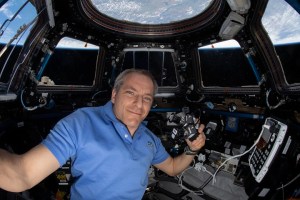
Space Station Research Contributes to Navigation Systems for Moon Voyages
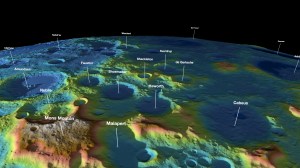
NASA, Industry Improve Lidars for Exploration, Science
NASA engineers will test a suite of new laser technologies from an aircraft this summer…

IMAGES
COMMENTS
LONDON — Stratospheric balloon company HALO Space plans to offer aspiring space travelers the space tourism equivalent of glamping. Instead of tight space suits and stomach-churning G-forces ...
HALO Space, a stratospheric balloon company, is revolutionizing space tourism with a luxurious twist akin to glamping. Instead of the typical space journey's tight suits and stomach-churning G-forces, HALO's pressurised capsule, tethered to a helium-filled balloon, boasts plush swivel seats, expansive windows, and gourmet dining.
The world is your oyster. The only question is… where will you sleep? How about staying at one of the world's best stargazing Airbnbs! Luckily there are tons of options. From space-themed hotels to bubble hotels and glamping spots, there are plenty of amazing places where you can stargaze before bed - or even stargaze from bed!
A Spanish company that aims to take tourists to the edge of space compares its balloon-powered trips to the stratosphere as leisurely "glamping," as distinct from the more brief, intense and ...
There's an out-of-this-world glamping experience coming to Antarctica that's fully inspired by space tourism. In November 2022, travel company White Desert will launch a stylish eco-camp called ...
When it comes to stargazing destinations, we all know there are some incredible ones across the globe. Most of us spend our time stargazing near home but occasionally want to travel further afield - and what better way to combine the joy of travel with the wonder of the night sky than by booking a stay at a hotel that's known for stargazing?...
The glamping resort, one of 12 Under Canvas sites, is anchored on a canyon rim plateau in southern Utah and is the first resort in the world to be certified by the nonprofit authority on light ...
Experience the ultimate 'glamping' in space with HALO Space's balloon expeditions, offering gourmet cuisine, stunning views, and zero-emission flights.
Space tourism is finally a reality — and we've got a rundown of everything you need to know about booking a galactic getaway, from how you're getting up there to how much it will cost for a ...
This Mirrored Space Pod Was Just Named the No. 1 Glamping Spot in the U.S. It's surrounded by meteor rocks in the Texas desert, and 10 minutes from a national park.
Jul 7, 2024. --. Is Space Glamping the Next Big Travel Trend. The concept of space tourism is transcending the realms of fantasy to become a tangible reality, with companies like Virgin Galactic and Blue Origin paving the way for commercial space flights. By 2030, the space tourism industry is projected to burgeon into a $3 billion market ...
Astrotourism is defined by Utah University, in the densest area of dark sky places in the U.S., as being "nature-based tourism specifically concerned with the viewing of celestial objects, space, and the physical universe.". Essentially, astrotourism is a trip that is centered on viewing the night sky, preferably in an environment with ...
Space tourism is human space travel for recreational or leisure purposes. It's divided into different types, including orbital, suborbital, and lunar space tourism.
There are ways to bring space into your life in 2022 - even if you're not taking yourself to space (or the edge of it). Here's how to experience space tourism even if you can't blow your life ...
The superrich are obsessed with the concept of space glamping. They're in luck, because companies like SpaceX and Blue Origin are making great strides in the space tourism industry. Blue Origin/Getty
This mission, however, has been billed as the beginning of a new era of space travel in which average people, rather than government-selected astronauts and the occasional deep-pocketed adventurer ...
The next step in space tourism? A luxury training center for civilians. Start-up Orbite is already running space camps out of hotels in France and Florida 4 min (iStock/Washington Post illustration)
If you love space and want to keep exploring the world, let my space tourism bucket list give you a whole new set of experiences to seek out. From rocket launches to visiting space, there's inspiration here for a life of adventure.
Discover the exciting world of space tourism and learn how it's changing the future of travel. Find out what space tourism is, how it works, and how you can be a part of it.
Experience the great outdoors in a unique way with glamping. Discover the best glamping spots in the U.S. for a unique travel experience.
Here are some of our picks for Glamping in Washington near the North Cascades. 7. Mount Vernon Camping Resort Yurt 6. Located in a shady spot of the campsite, this yurt has space for four people ...
You already know that Florida is a great space destination. Where else can you watch a rocket launch in the morning and ride Space Mountain in the afternoon? But, did you also know: Florida has some areas with pristine night skies! Beyond the bright lights of Orlando, Miami, and the Space Coast, there are some fantastic spots for stargazing in Florida...
Thinking of glamping near St Petersburg? Discover and book the best St Petersburg glamping sites in state parks and national parks, plus on farms, vineyards, and nature preserves.
NASA's Goddard Space Flight Center in Greenbelt, Maryland, is a leading developer of optical navigation technology. For example, GIANT (the Goddard Image Analysis and Navigation Tool) helped guide the OSIRIS-REx mission to a safe sample collection at asteroid Bennu by generating 3D maps of the surface and calculating precise distances to targets.
Organic Hideaways Pvt Ltd. has opened Eco Glamp at Kanatal in Uttarakhand. Eco Glamp offers a once-in-a-lifetime Glamping experience of living in the outdoors in Geodesic Domes with utmost safety and luxury hospitality amenities. With this opening Eco Glamp also becomes India's largest Glamping retreat, that is also eco-friendly and sustainable.